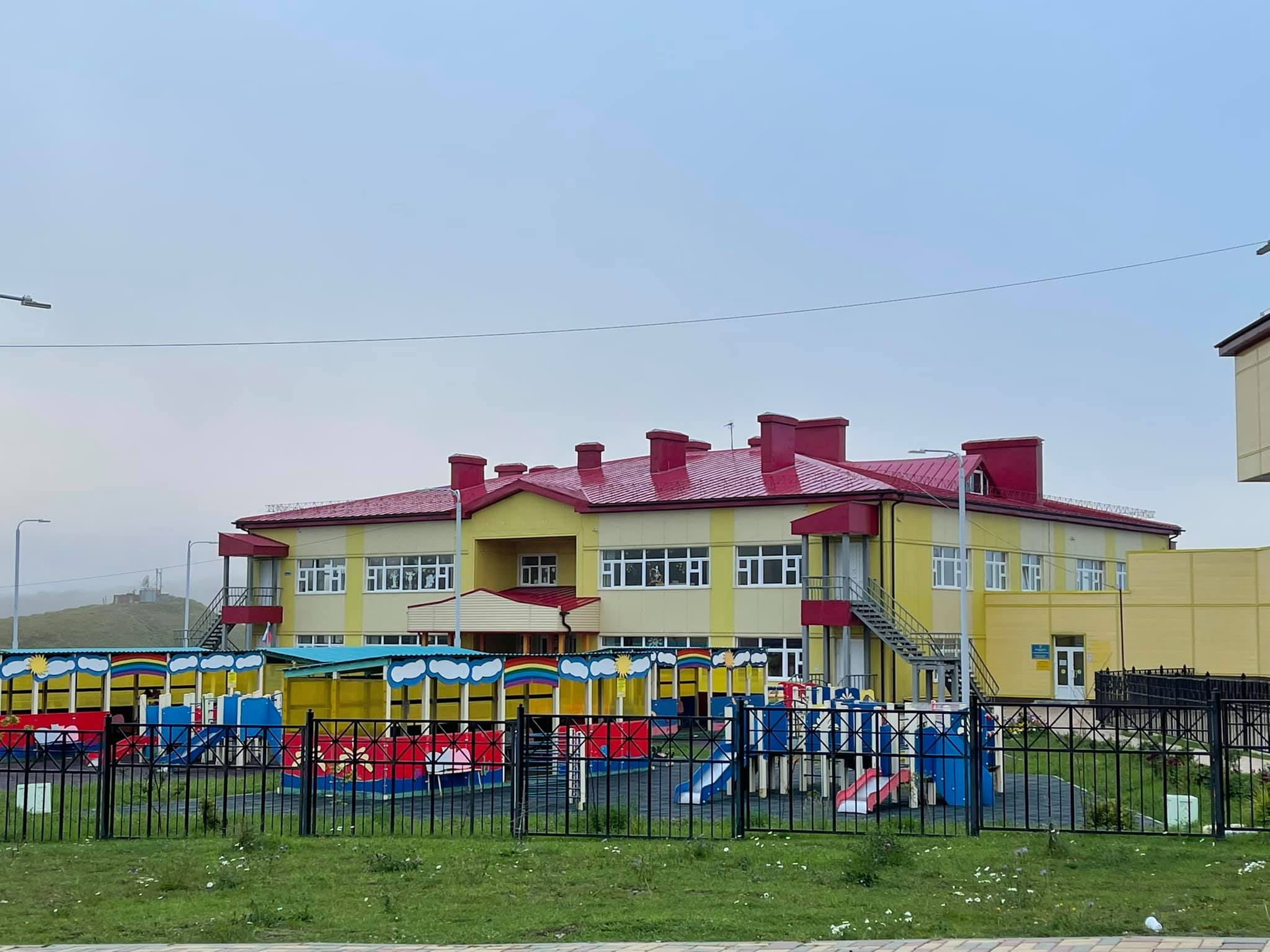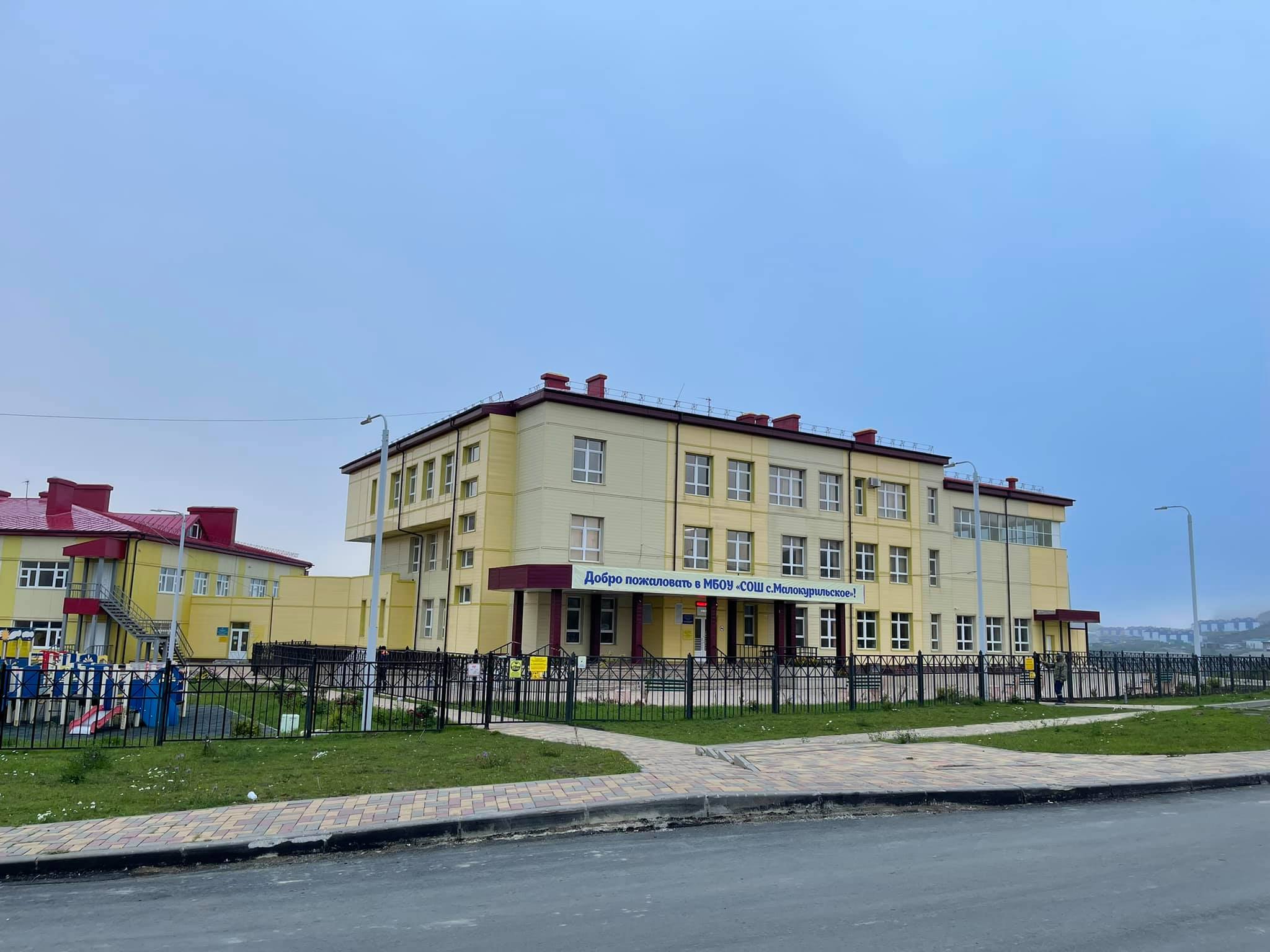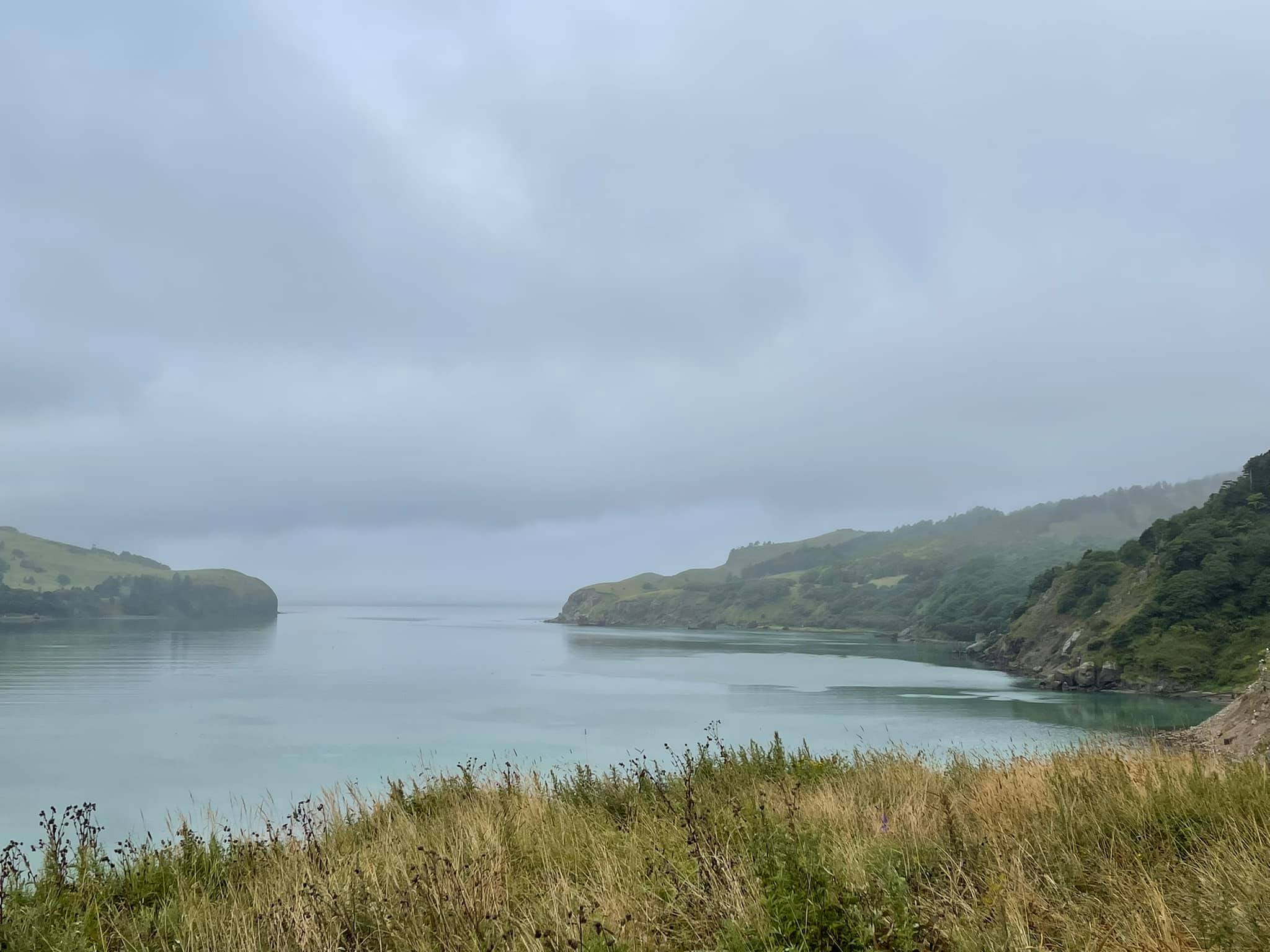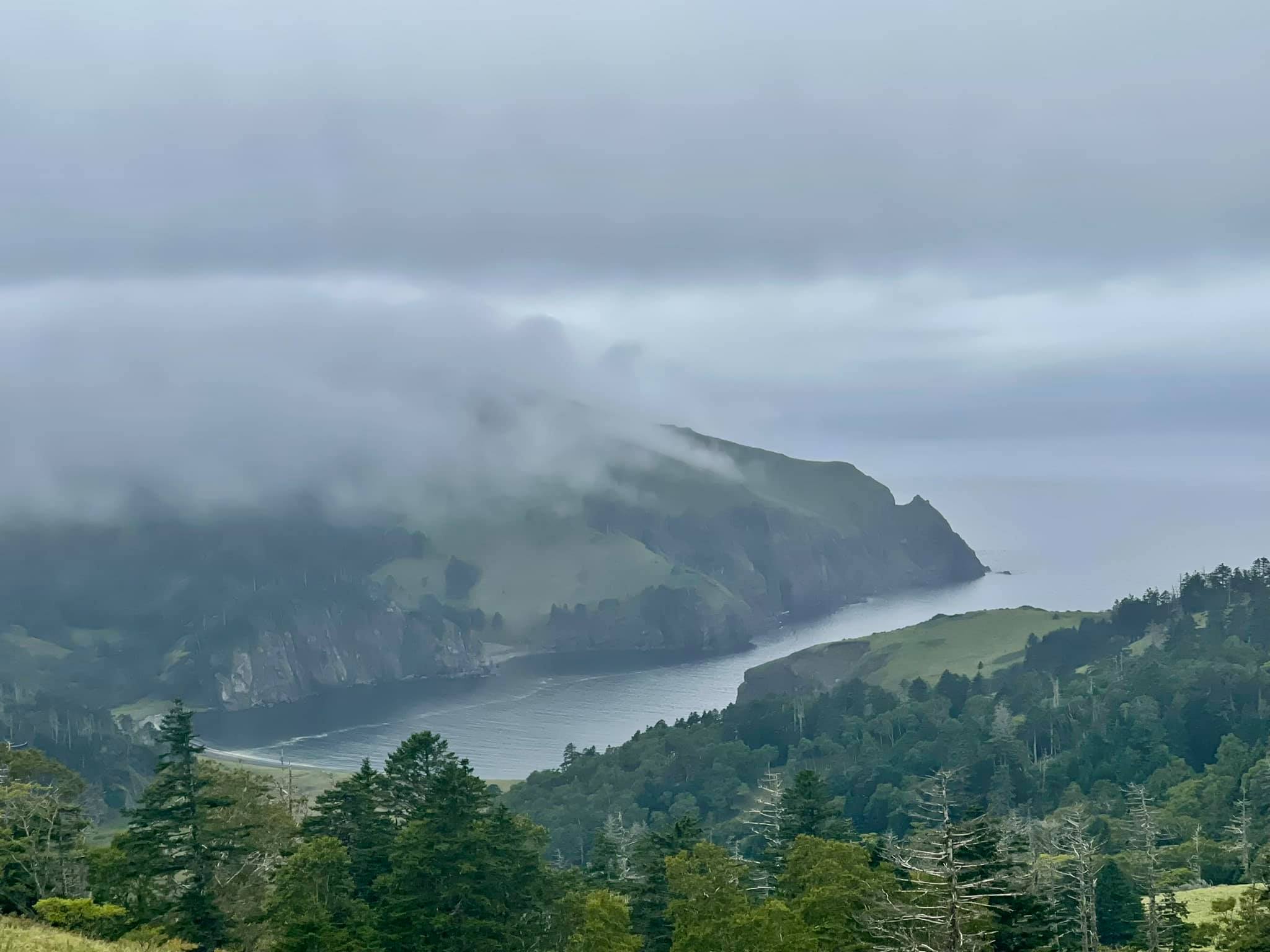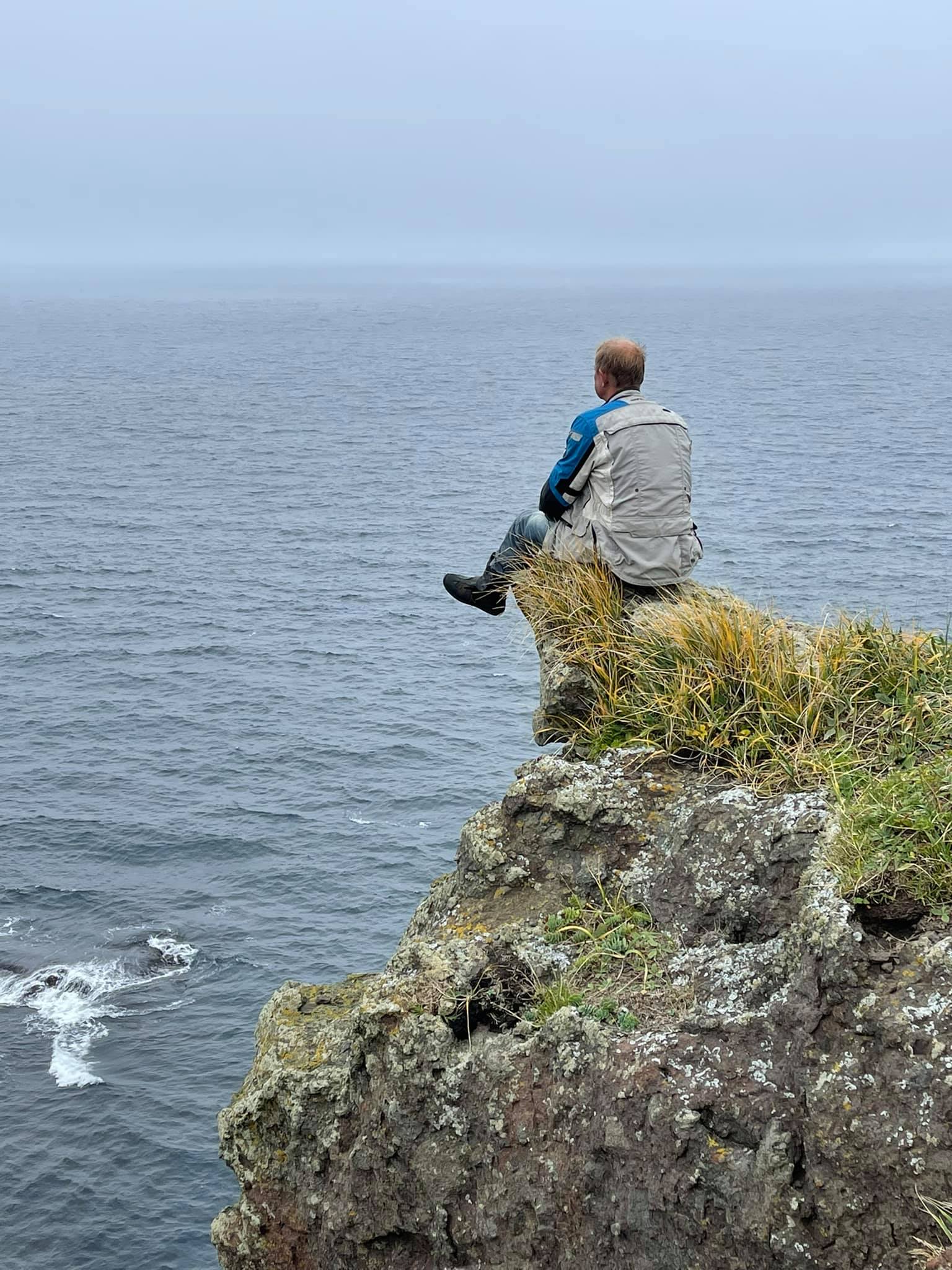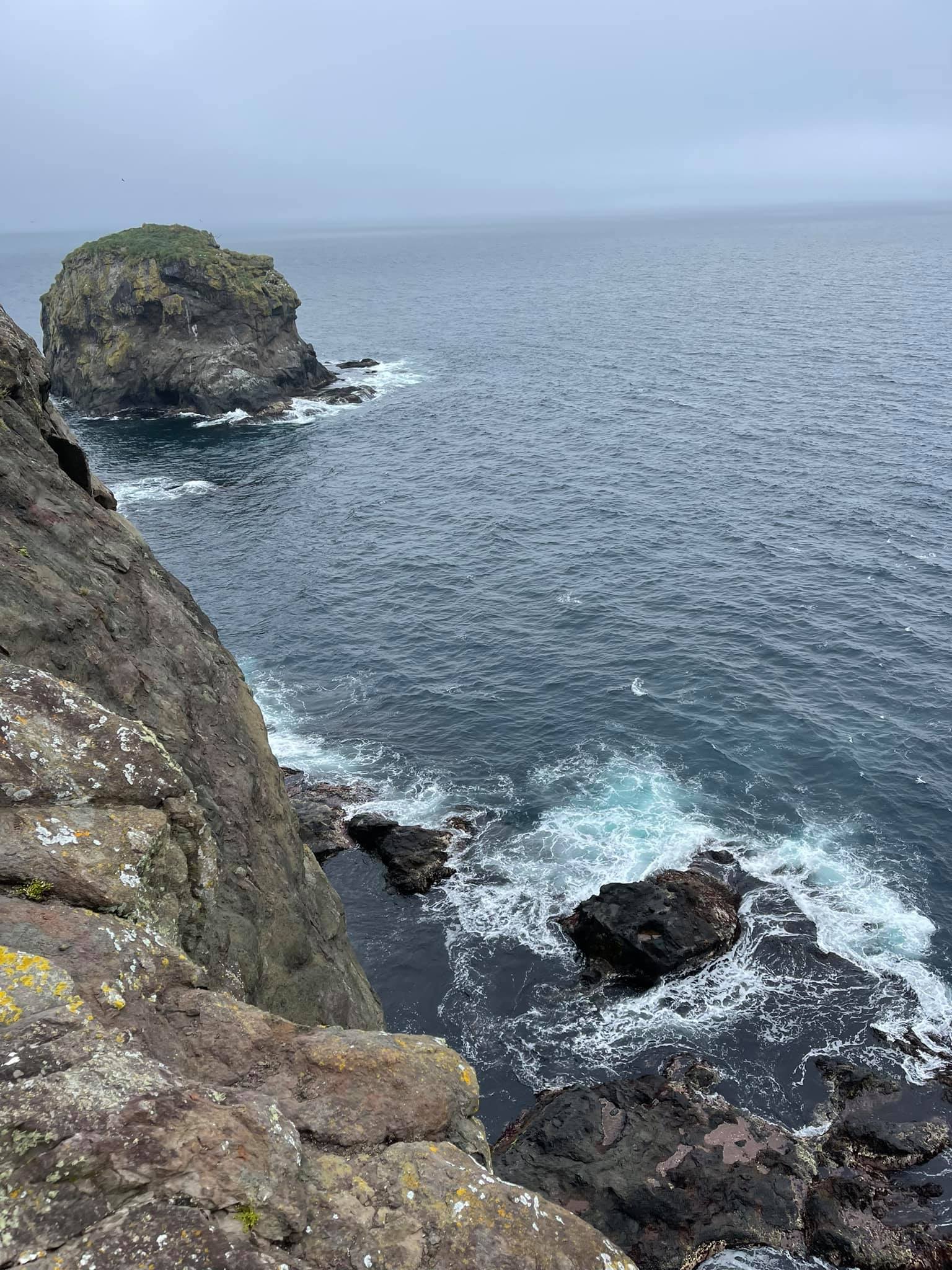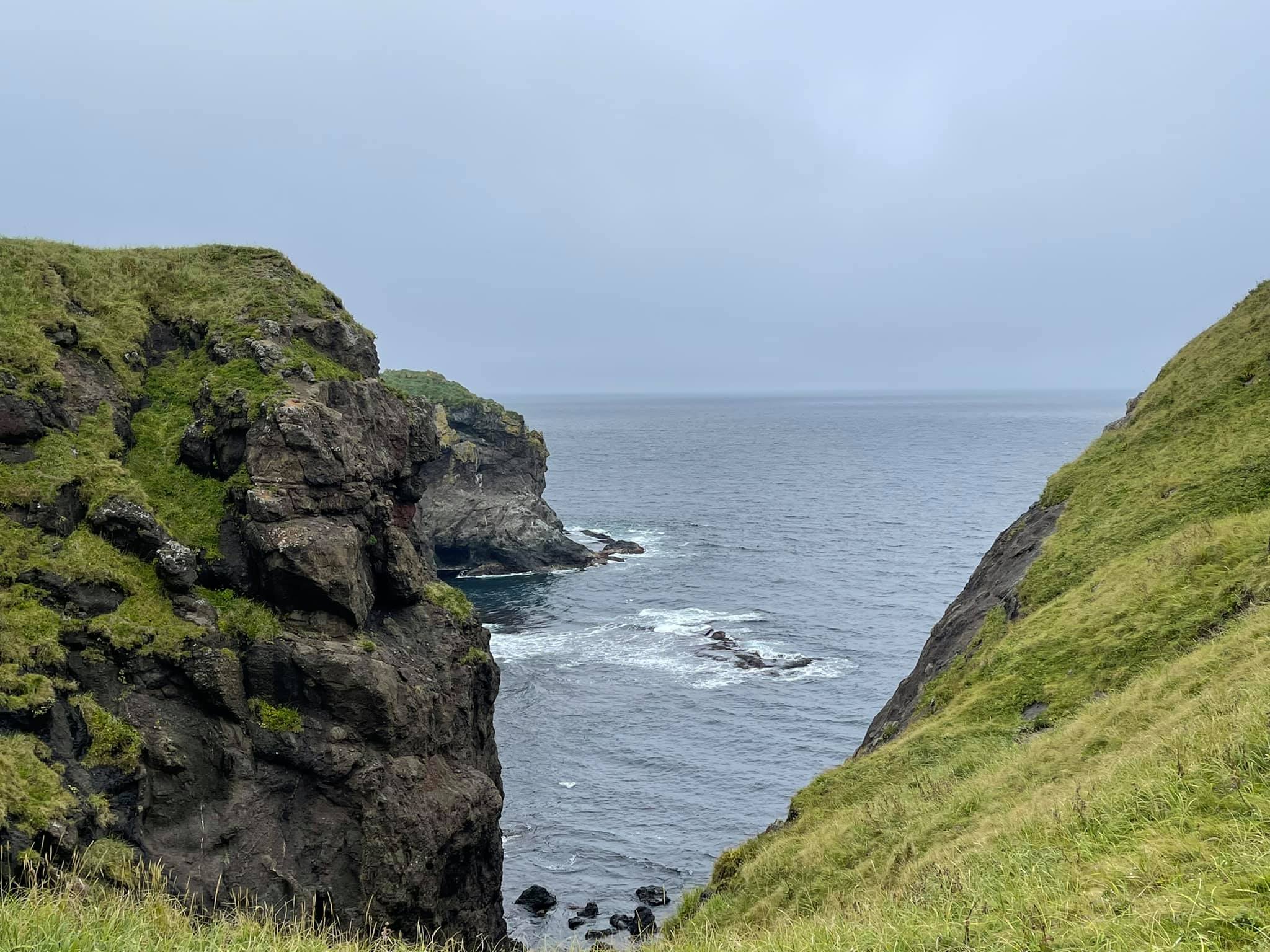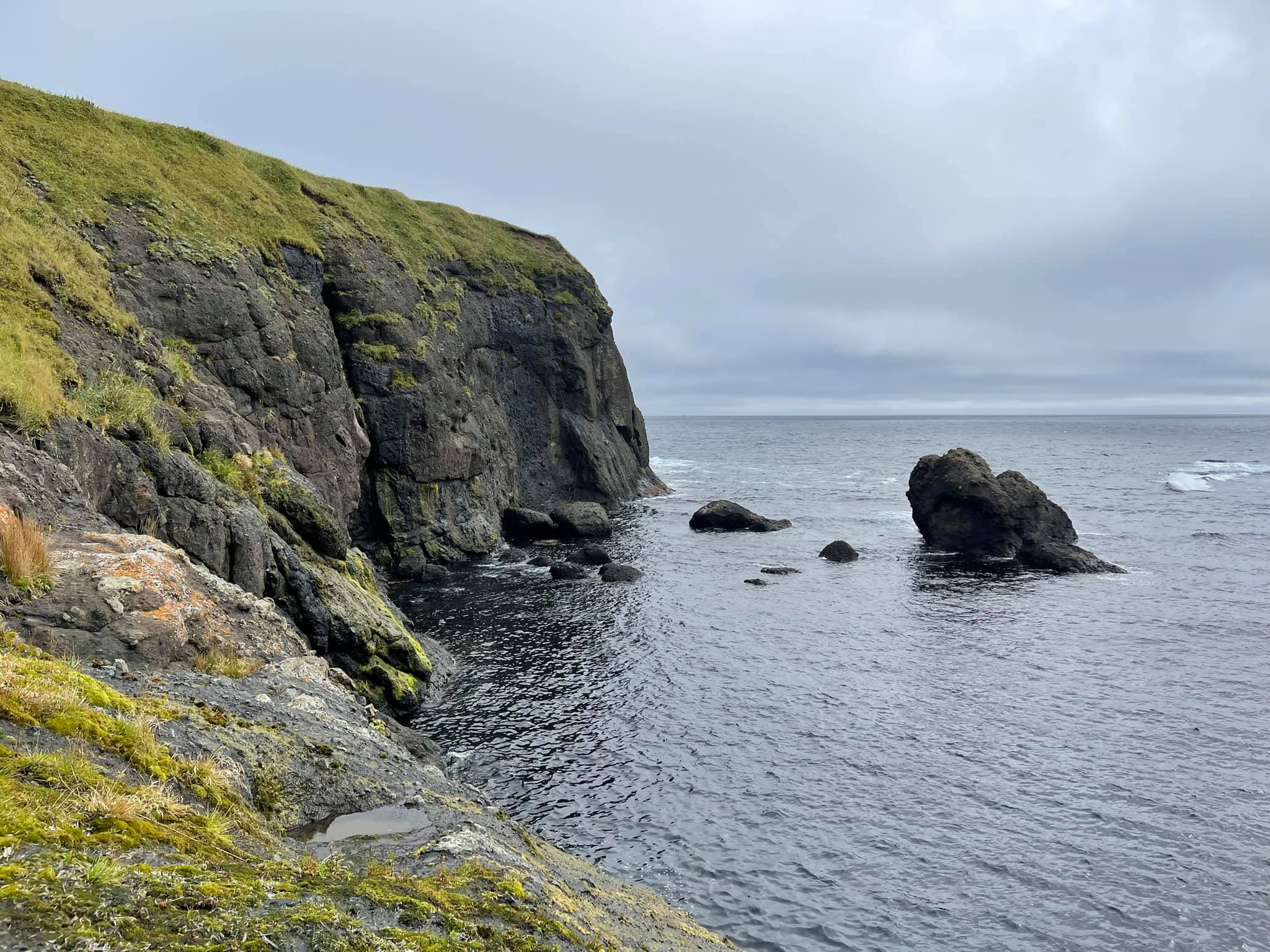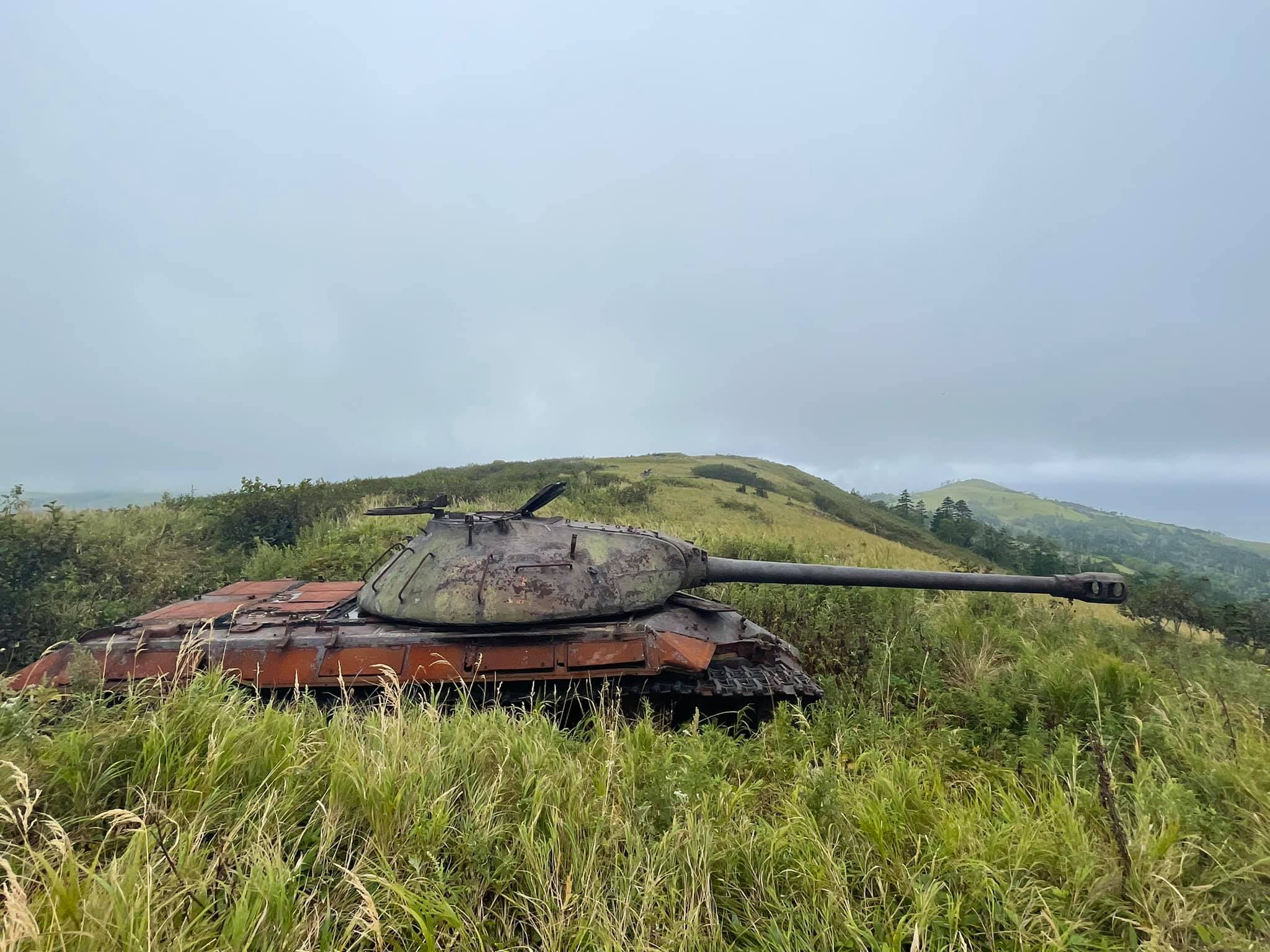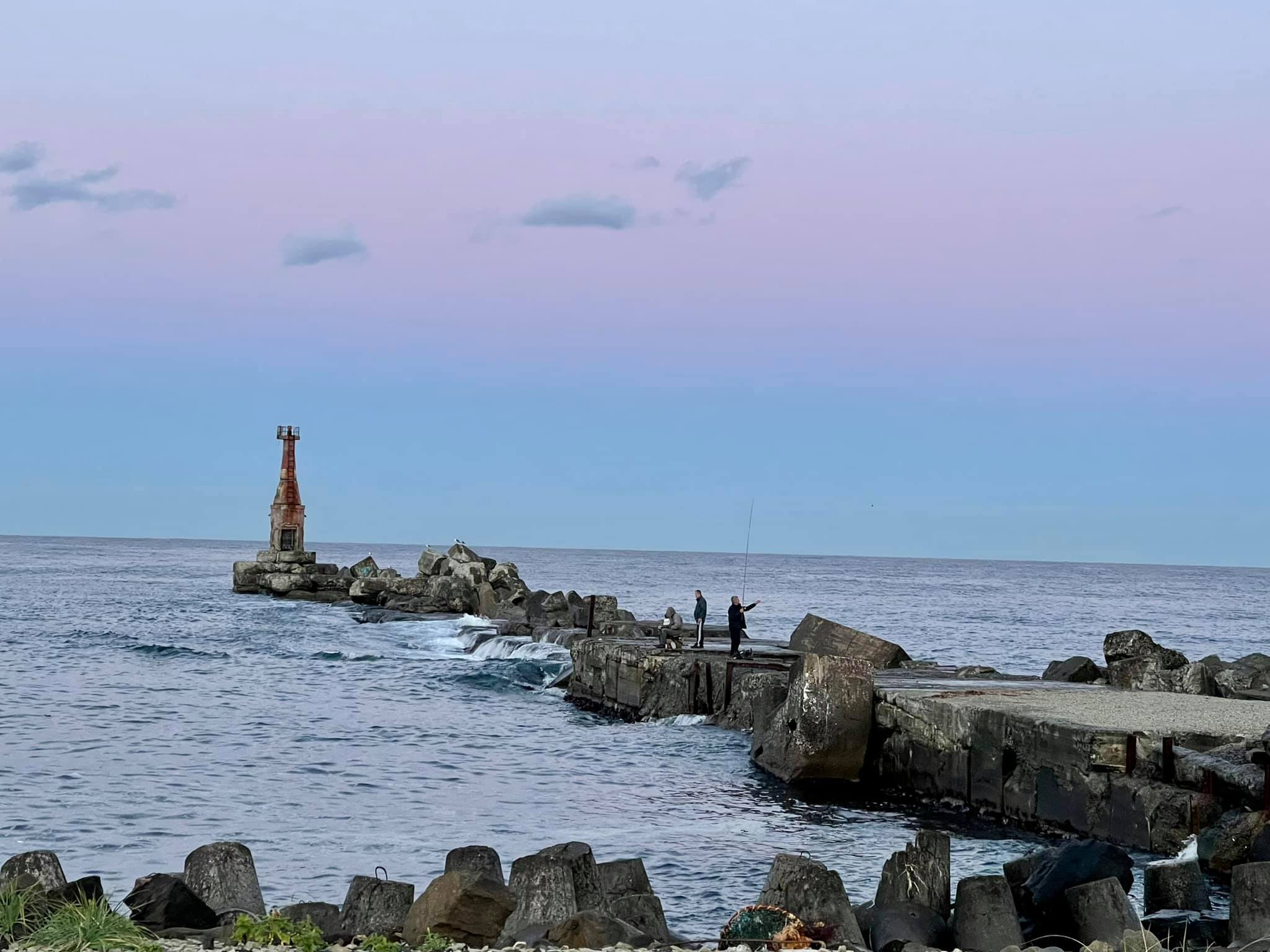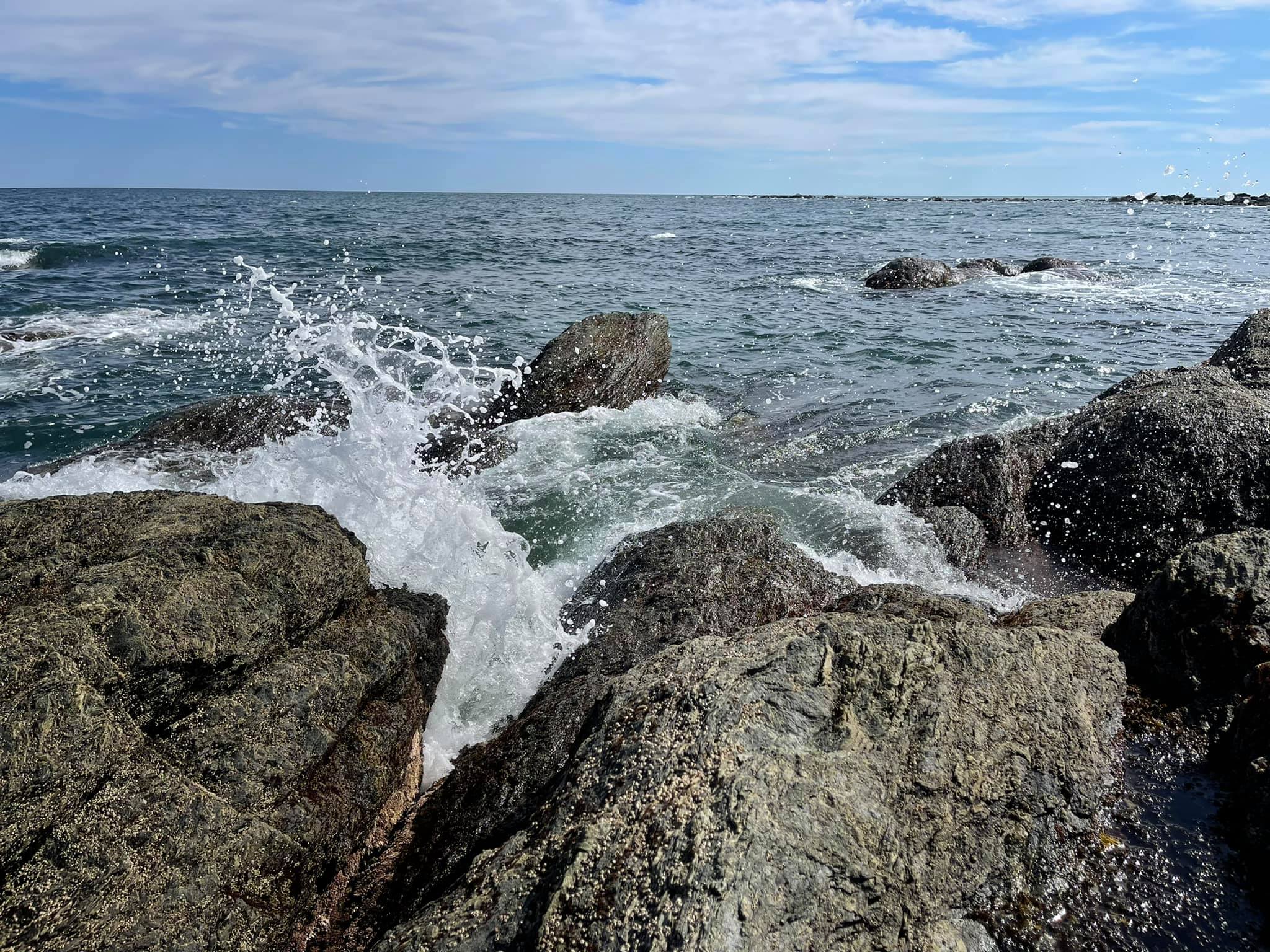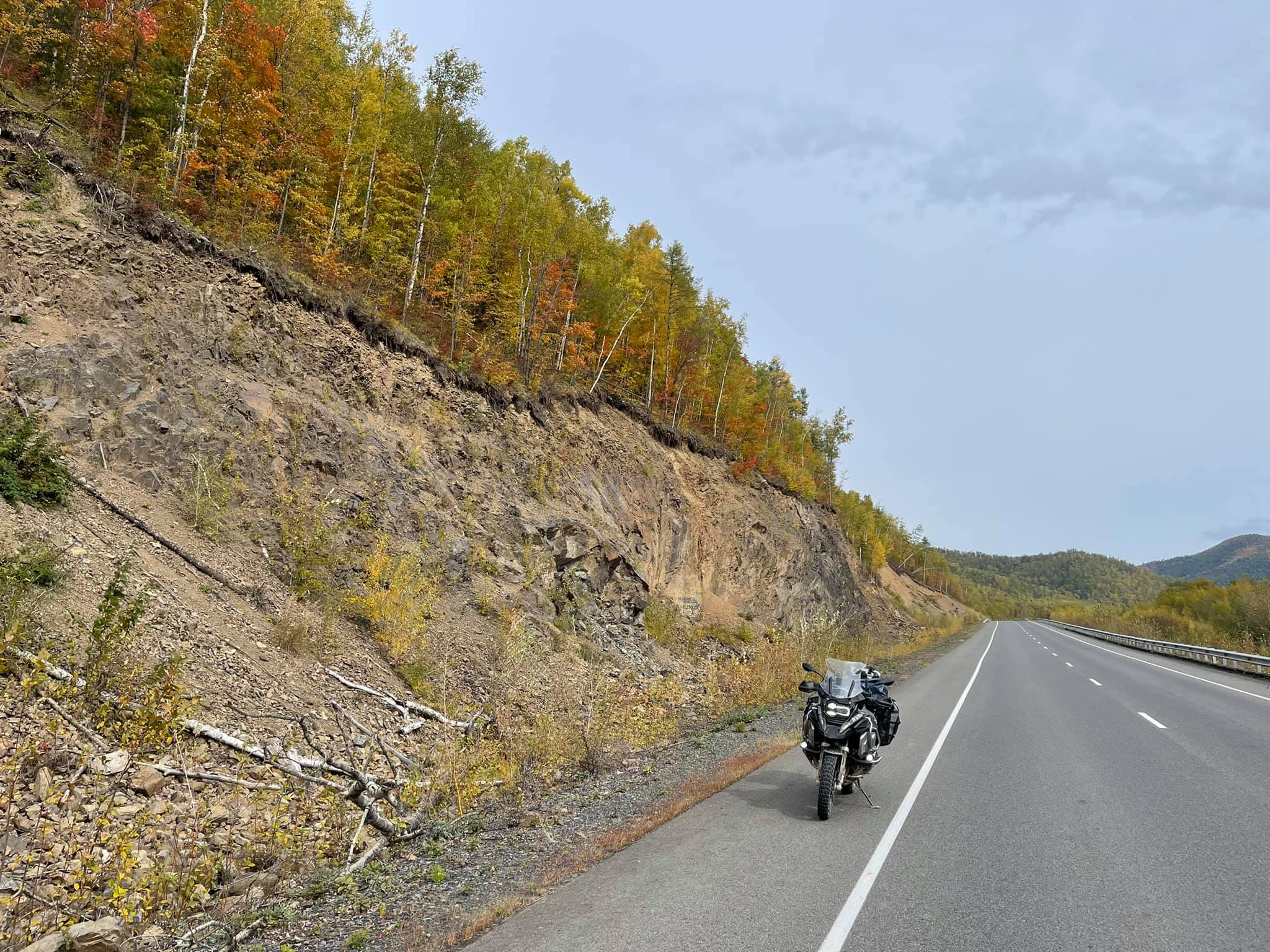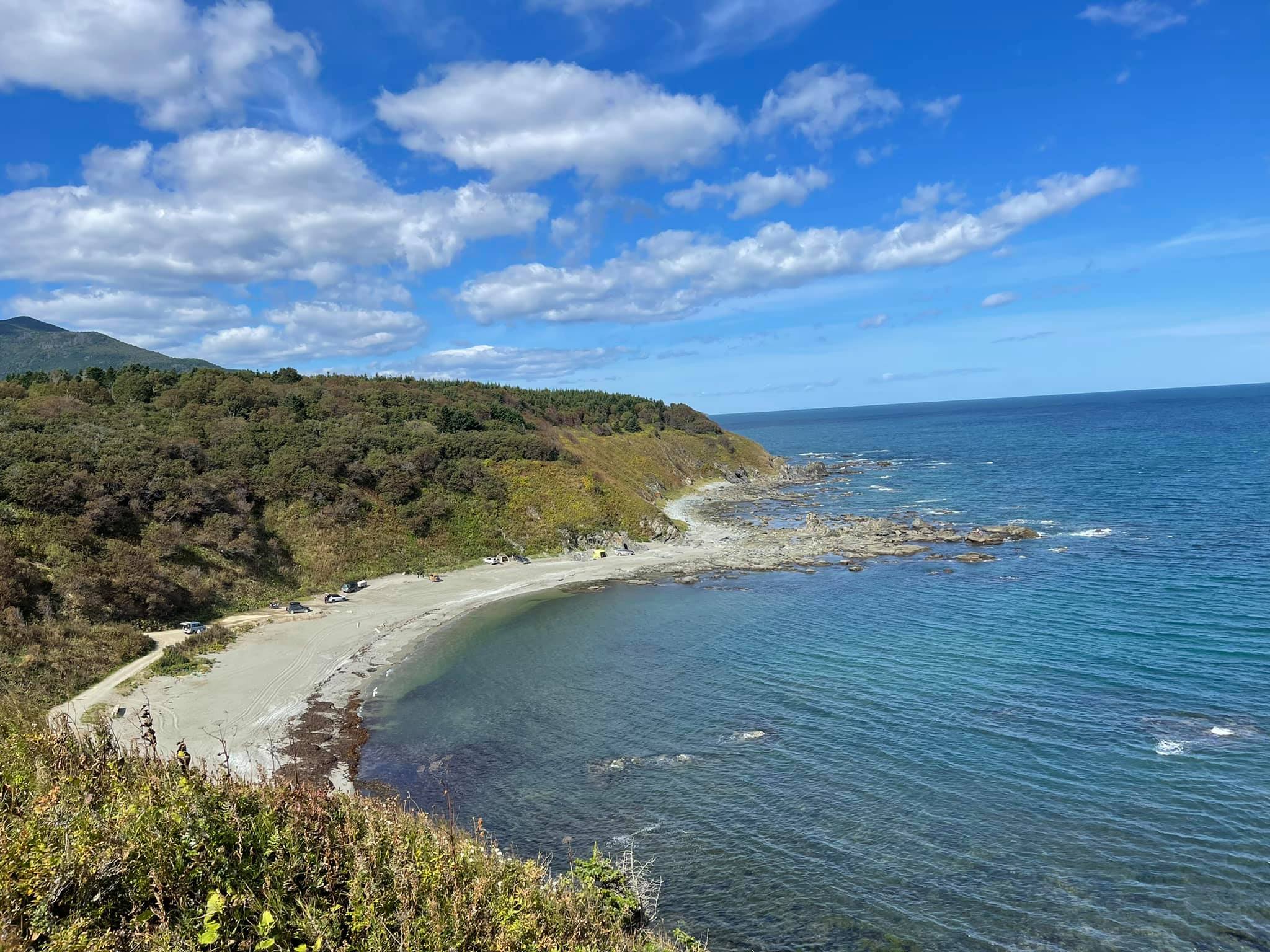A motorbike journey to the Edge of the World, part 3. Shikotan
Shikotan Island
A motorbike trip to Sakhalin and the Kurile Islands.
A small green tug with painted Japanese hieroglyphs on the board buried its nose into the side of a huge ship Igor Farkhutdinov, pushing it to the pier.
Igor Farkhutdinov is a tidy and comfortable ship with spacious cabins, a bar and a video salon.
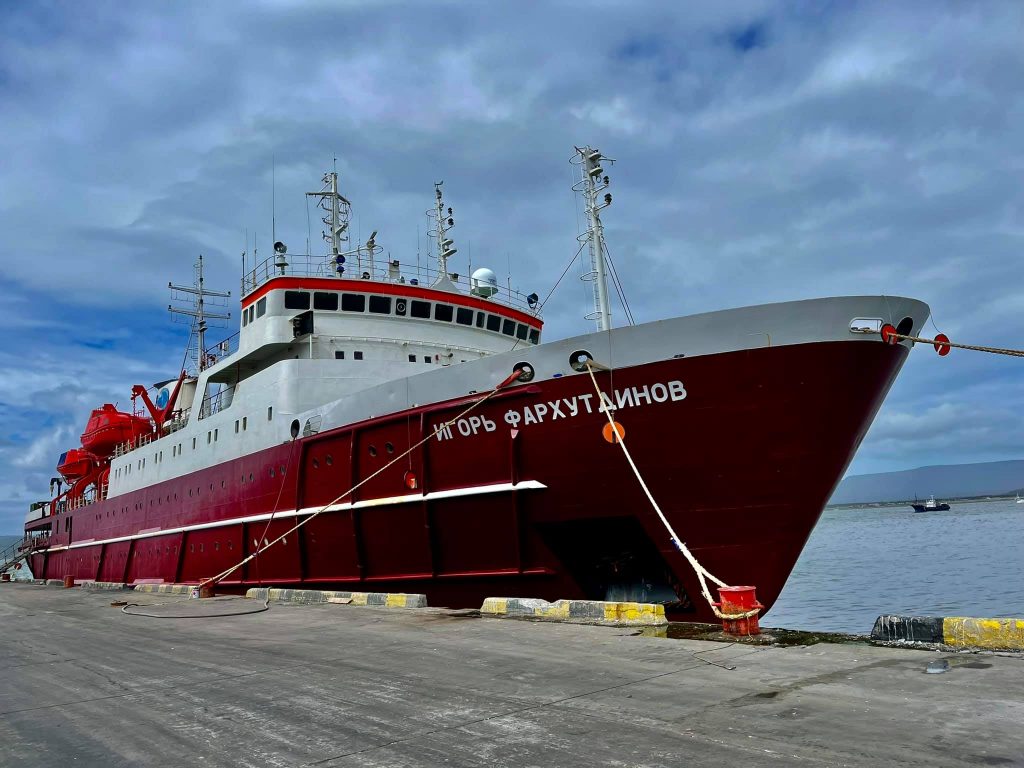
The sea adventure of my motorbikey is going on! :)
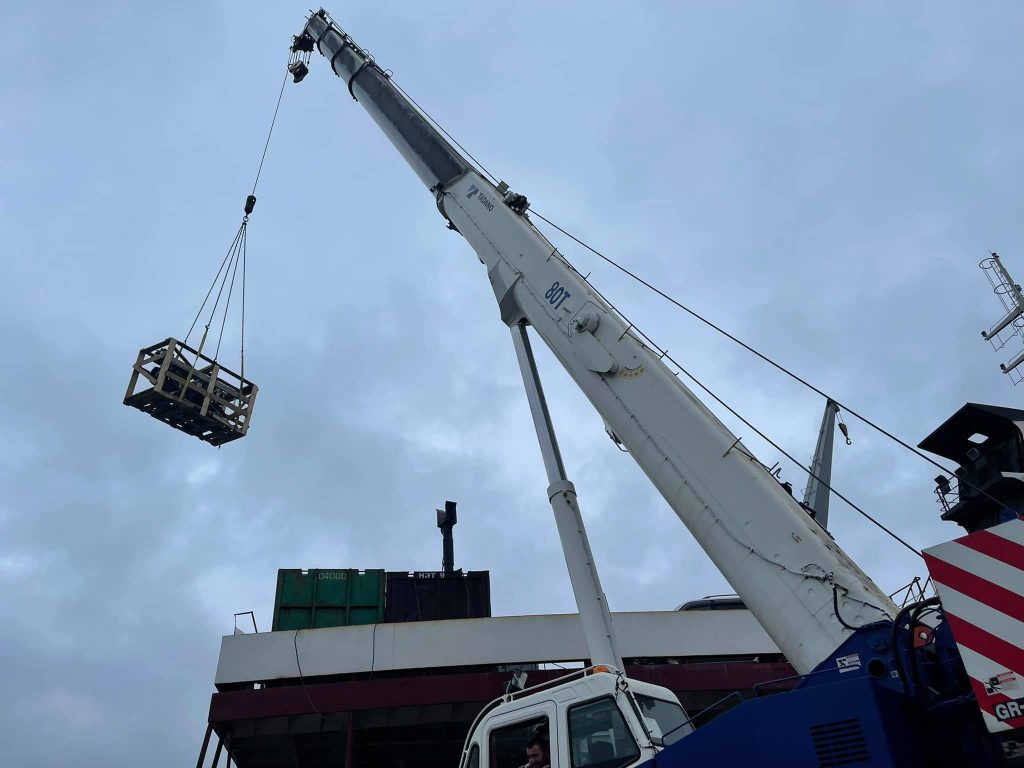
Well, hello, Shikotan! An island on the edge of the world!
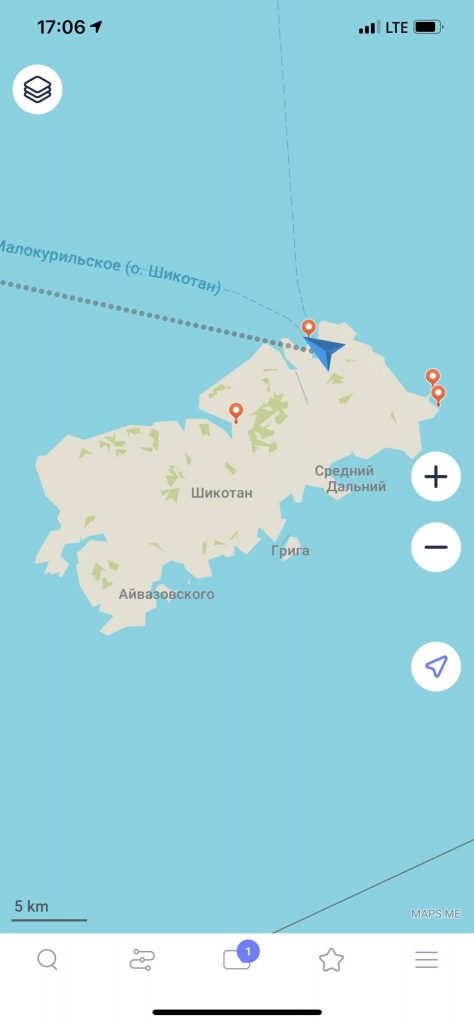
A slight delay was caused by the border guards checking our documents (you can't get off the board without a pass to the border line). And now I'm already on the pier watching my motorbike appear from out of the bilge. And half an hour later I'm riding along the central street of Malokurilskoye village looking for a hotel.
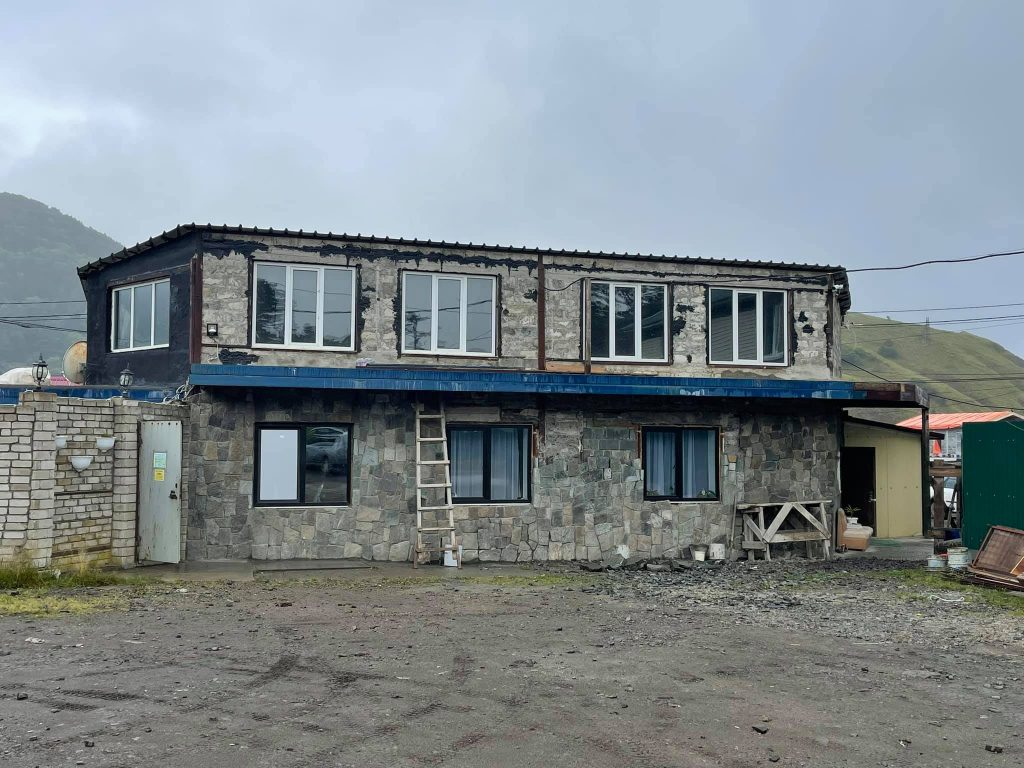
This is the inn where I will stay. The hostess is a wonderful and kind woman, who does everything herself and cooks very delicious dishes.
There are only two settlements in Shikotan, located 9 km from each other. They are Malokurilskoye and Krabozavodskoye villages. In total, a little more than 3 thousand people live in the whole island.
This is a new school and a kindergarten.
There are almost no asphalt roads except for several paved streets in the village.
Having settled in a small but cozy inn "Zvezda" ("A star"), I decided to walk around Malokurilskoye. It seemed to me that the village is located on the slopes of the hills that surround the bay.
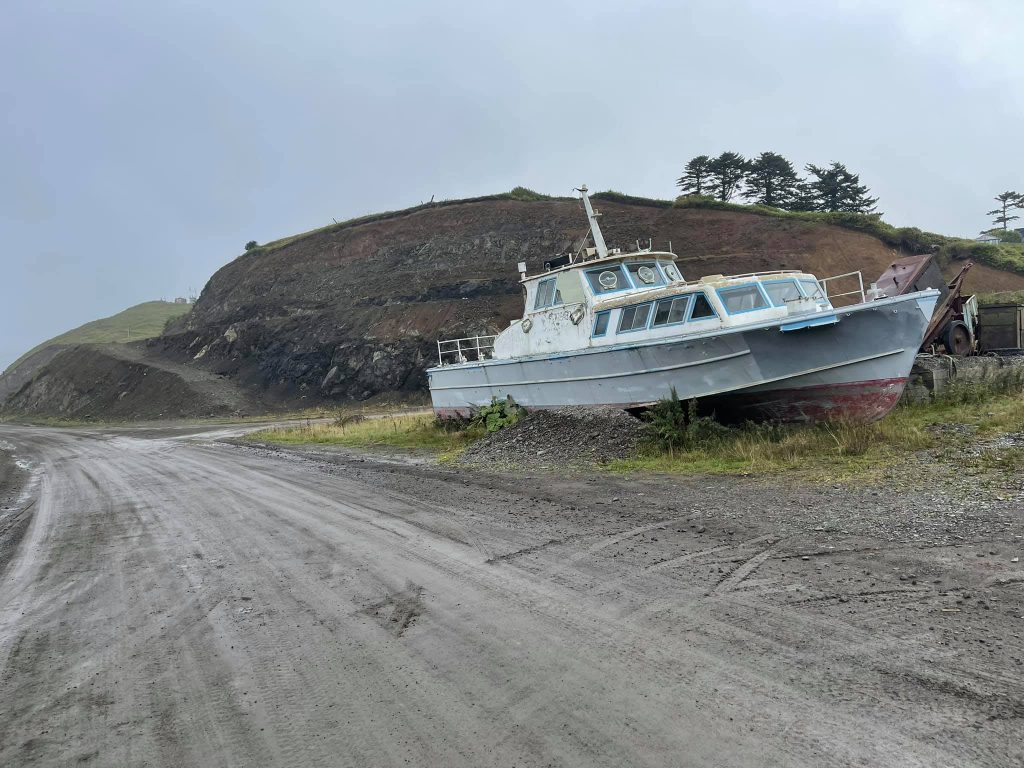
You can see ships everywhere. Even by the roadside
If you go up, you'll see quite pretty 2-3 storey houses, a temple, fuel warehouses, a new beautiful school and kindergarten. A huge fish processing complex is being built closer to the bay. There is a lot of rusty scrap metal near the shore. The roads are dirty, and there are almost no sidewalks, so I went jumping over the puddles.
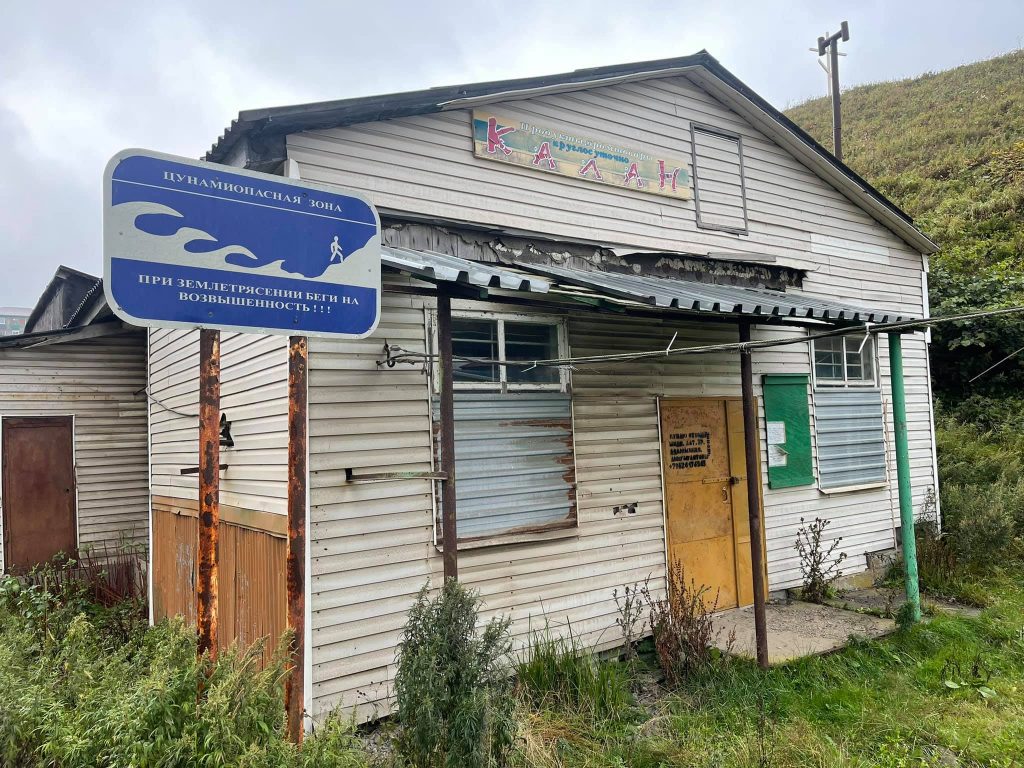
There are a lot of small shops, a chemistry, a hairdresser's, a canteen, a mobile store. The range of products is wide. You can find everything you need.
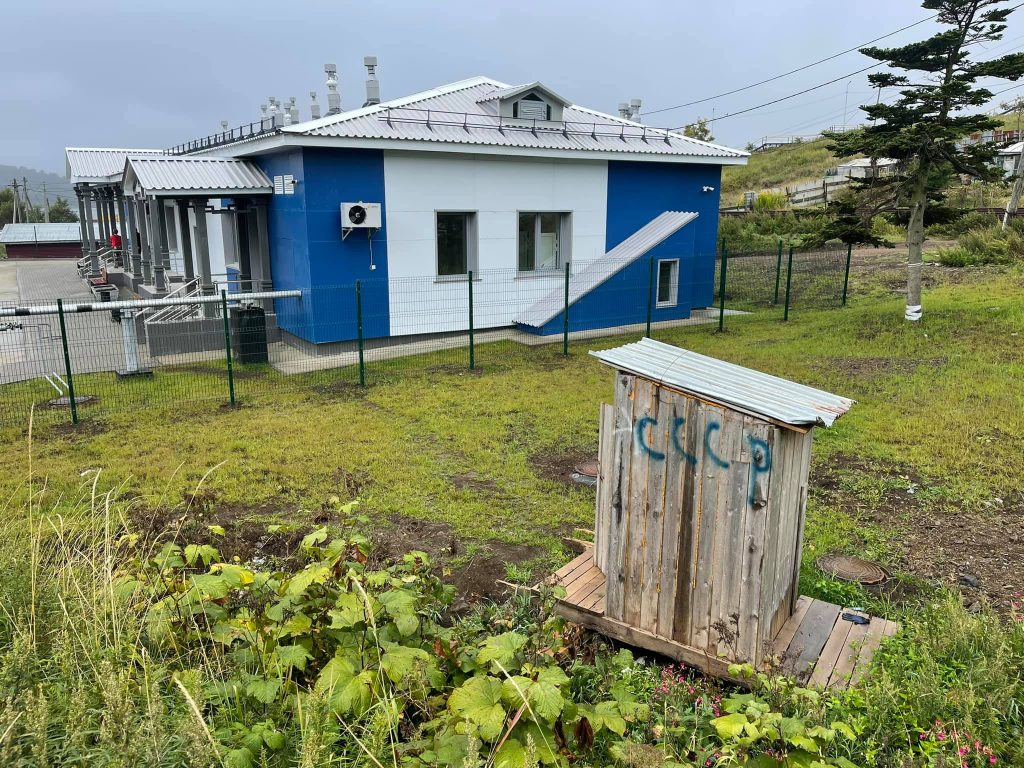
The past and the future in contrast.
I went to the bakery, had a cup of excellent cappuccino with wonderful fresh pastries. And the atmosphere was gorgeous! I was a little bit surprised!
After having a snack, I'm going to the neighbour Krabozavodskoye village. While going along a 9 km distance of excellent grader road through the forest, I saw a smoking garbage dump on the left. That made me feel sad…
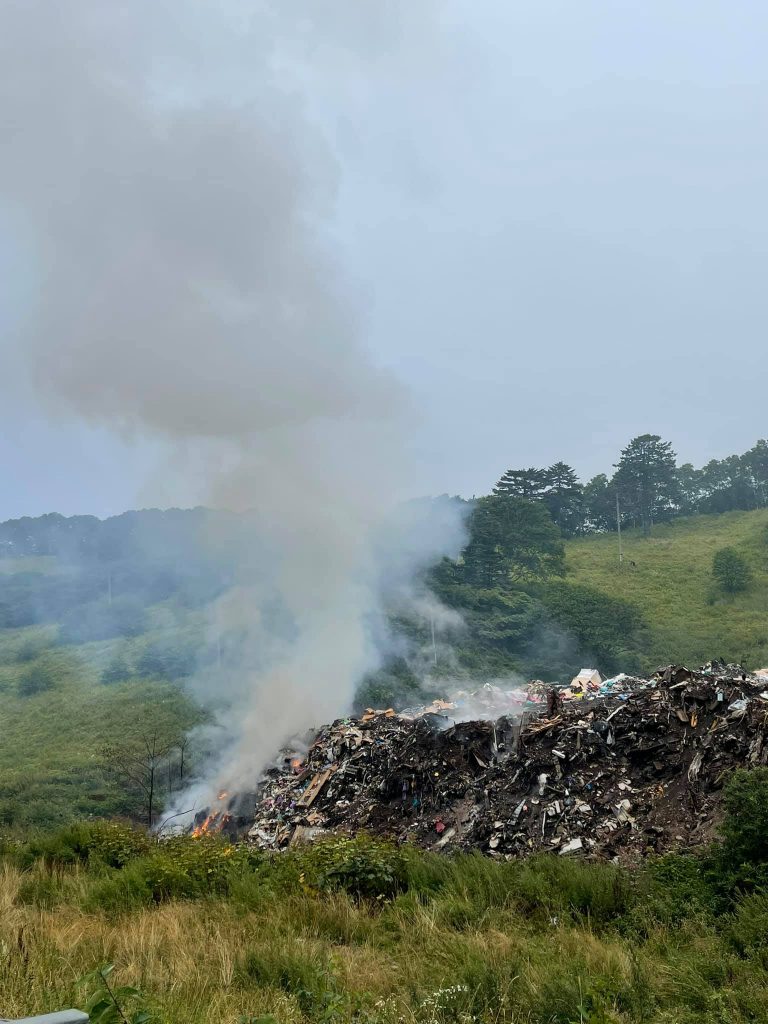
Krabozavodskoye is quite similar to Malokurilskoye. It is also located in a bay. A port, houses and shops are the same. The only difference is a huge fish processing complex, which is already operating here.
Unfortunately, I haven't found any place called Chertanovo.
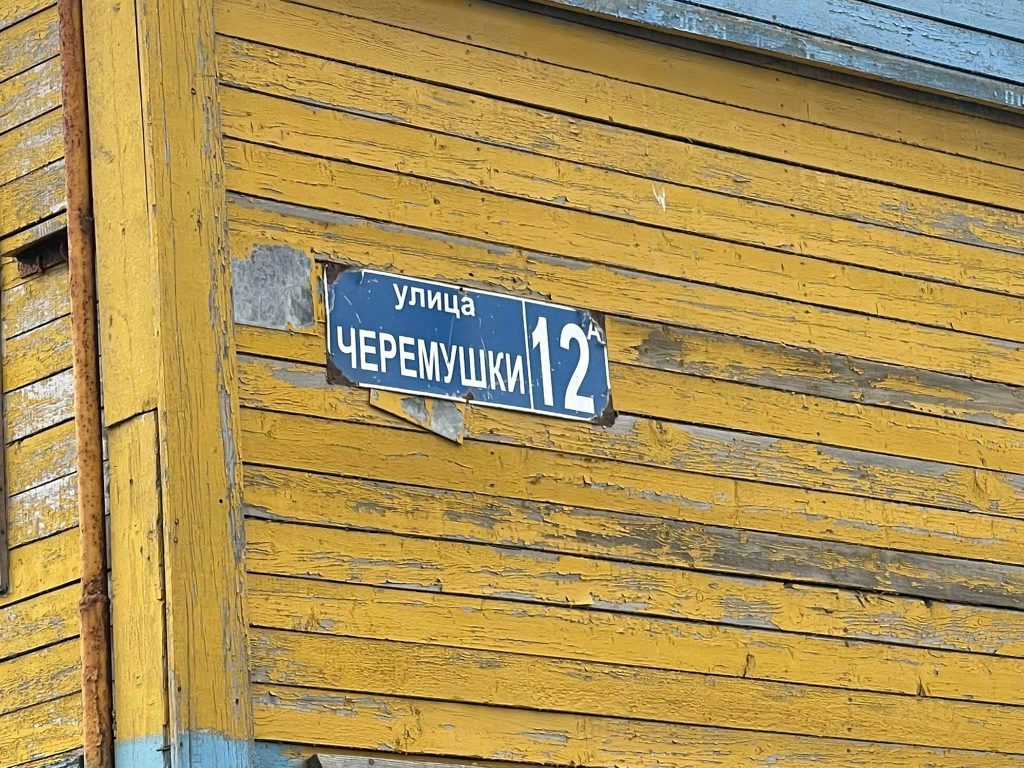
And there is no asphalt at all.
After exploring all the streets of the village I decided to take a ride deep into the island. Well, the roads there had turned into something completely terrible after the night's downpour. As usual, I went through huge puddles, slippery clay, mud and followed the ground roads that were looping up and down.
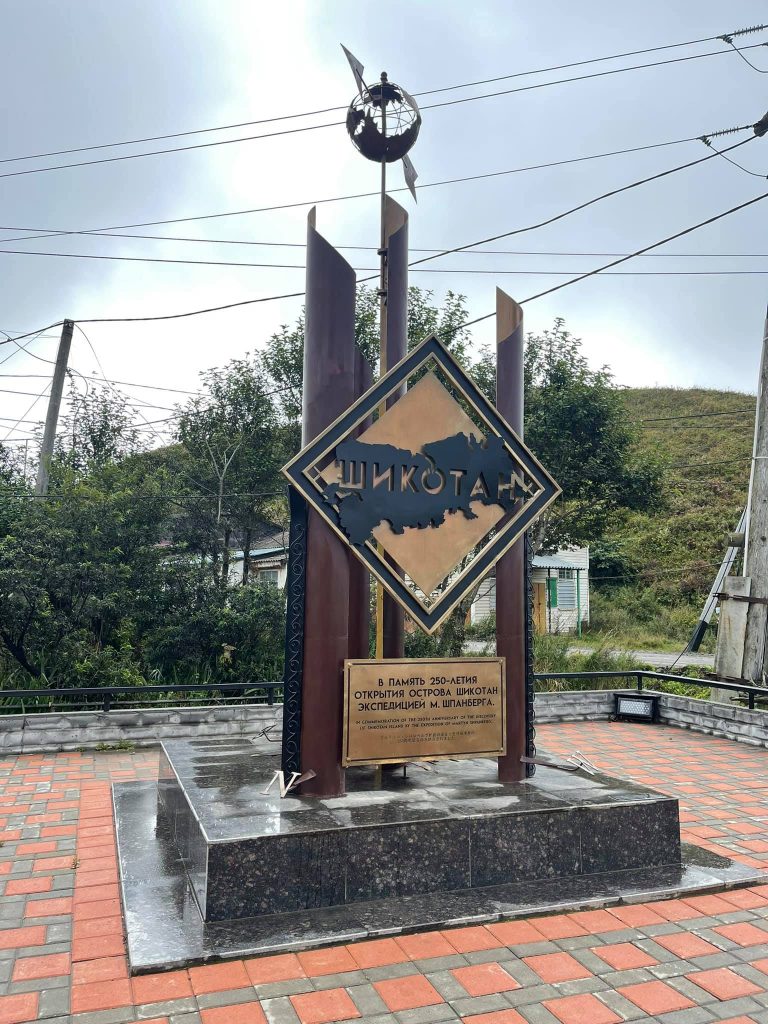
This is quite a dignified monument to the 250th anniversary of Shikotan discovery.
And the nature of Shikotan is just awesome!
The whole island is cut by beautiful coves and the hills are covered with dense vegetation, unusual trees, bamboo thickets. And what gorgeous views of the ocean and coastline I saw from the peaks! You definitely should come here for such an experience!
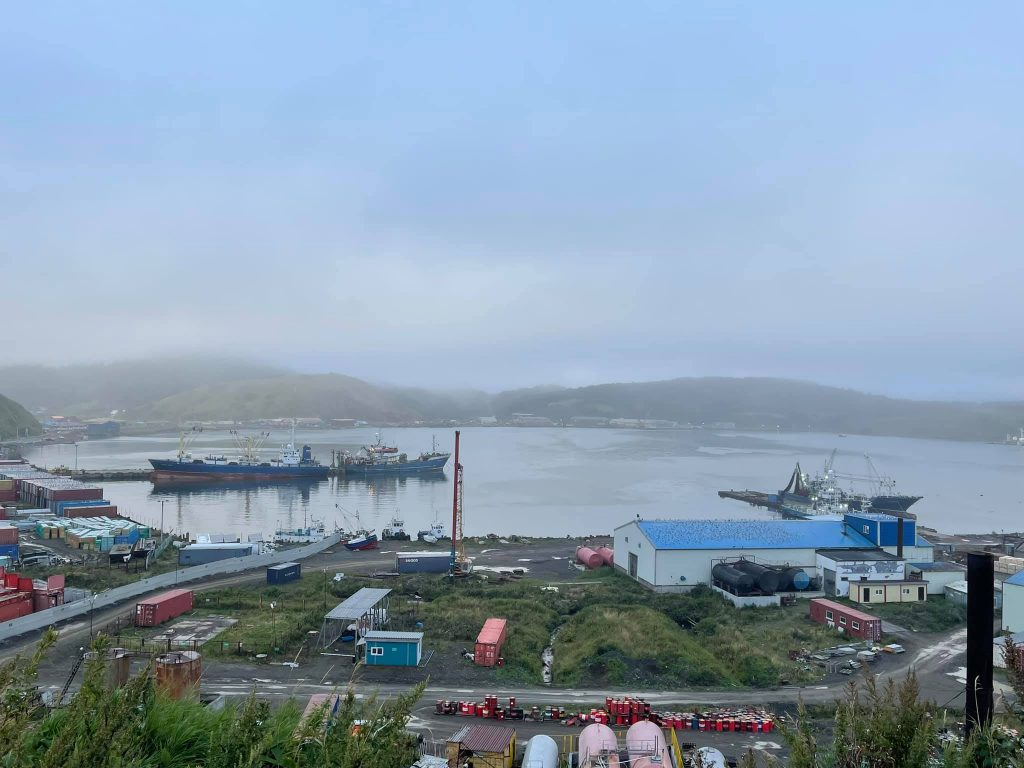
The only drawback was thick fog that suddenly absorbed the island, so I couldn't fully enjoy all this splendor today.
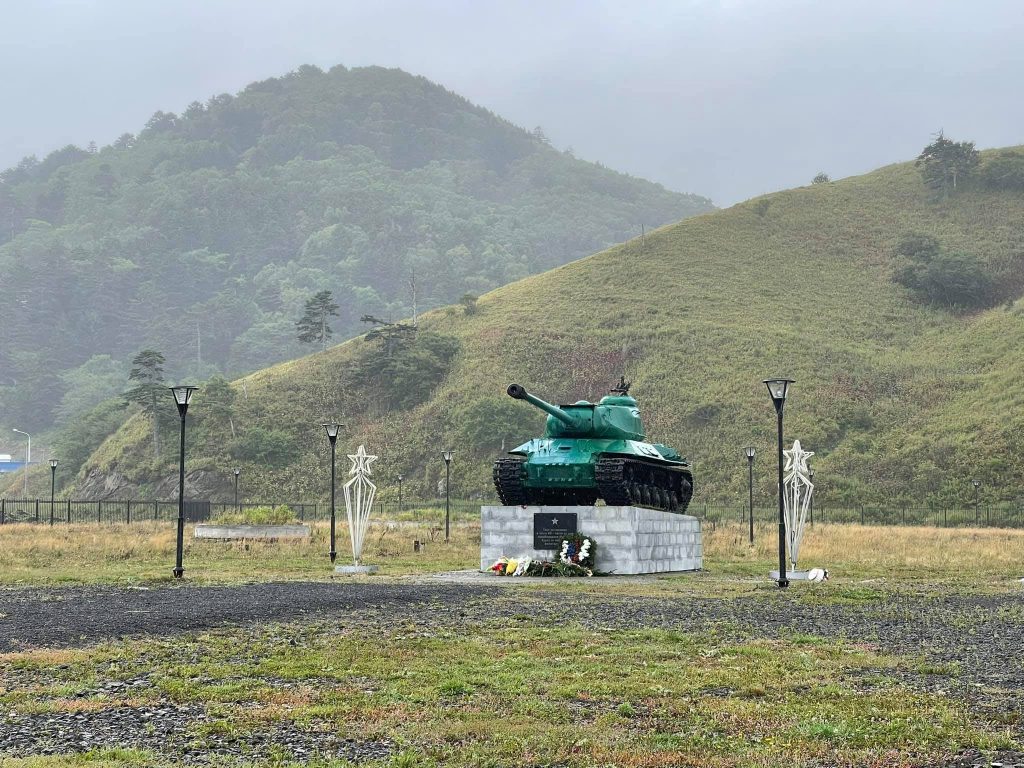
And this is the monument to tank.
The Edge of the World
I wonder how many places there are on our planet that people consider to be the edge of the Earth?
I've already been to several of them: Cape of Good Hope, Cape Agulhas, Cape Roca, North Cape… It's difficult to list down all of them.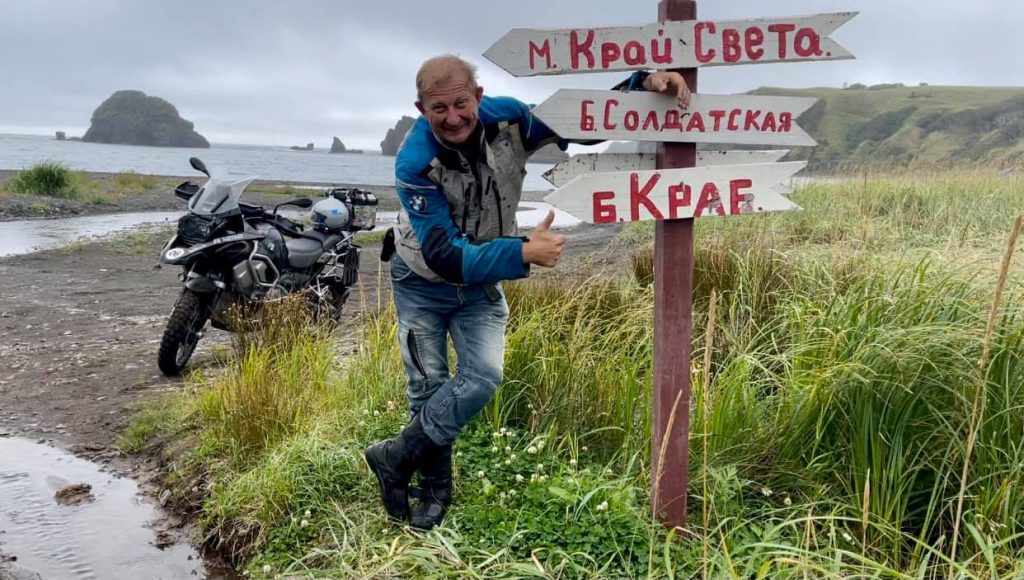
But yesterday I was at the real edge of the Earth, which is exactly called the Cape of the Edge of the World! (43.846948, 146.914048)
Yes, there is such a location on the map of Shikotan island. And it is possible to get to it, but not that easy.
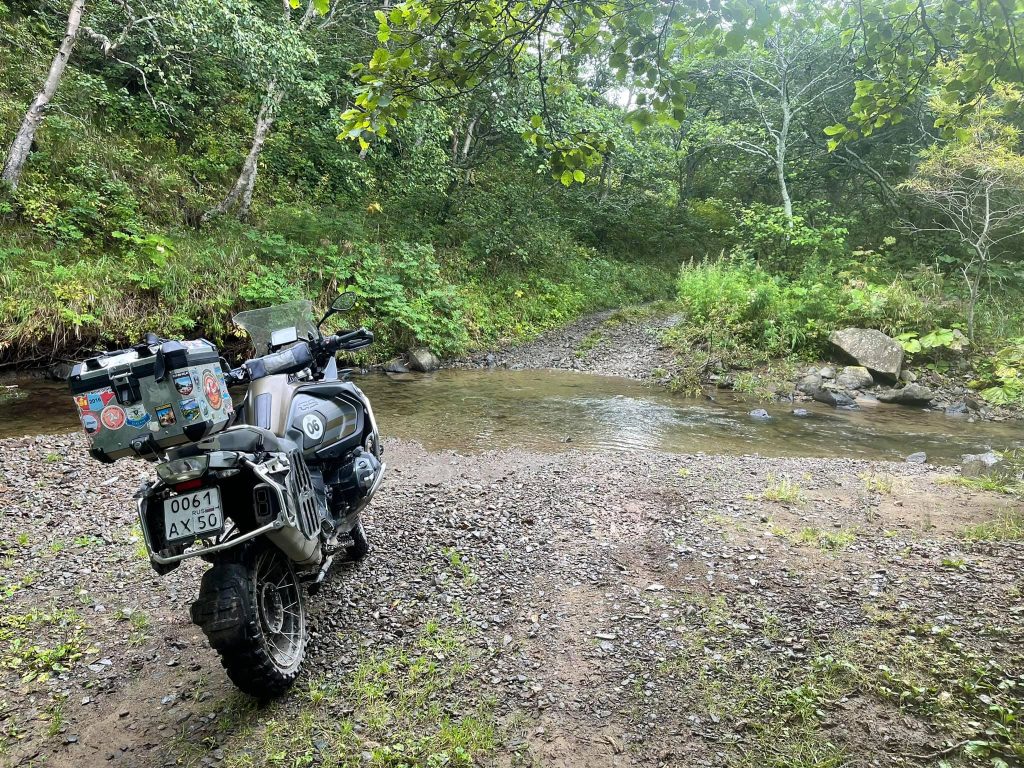
At first, the track was quite good.
This cape is the westernmost point of the island and the road, which leads to it, leaves a lot to be desired… Especially after heavy rain.
A 12 km distance turned out to be a blurred ground road full of washouts, puddles, ruts, detours kinda like goat trails, flimsy bridges, steep ascents and descents. I had to ride along the stone riverbed for a while.
Then I had to wade through the thickets of grass and bamboo…
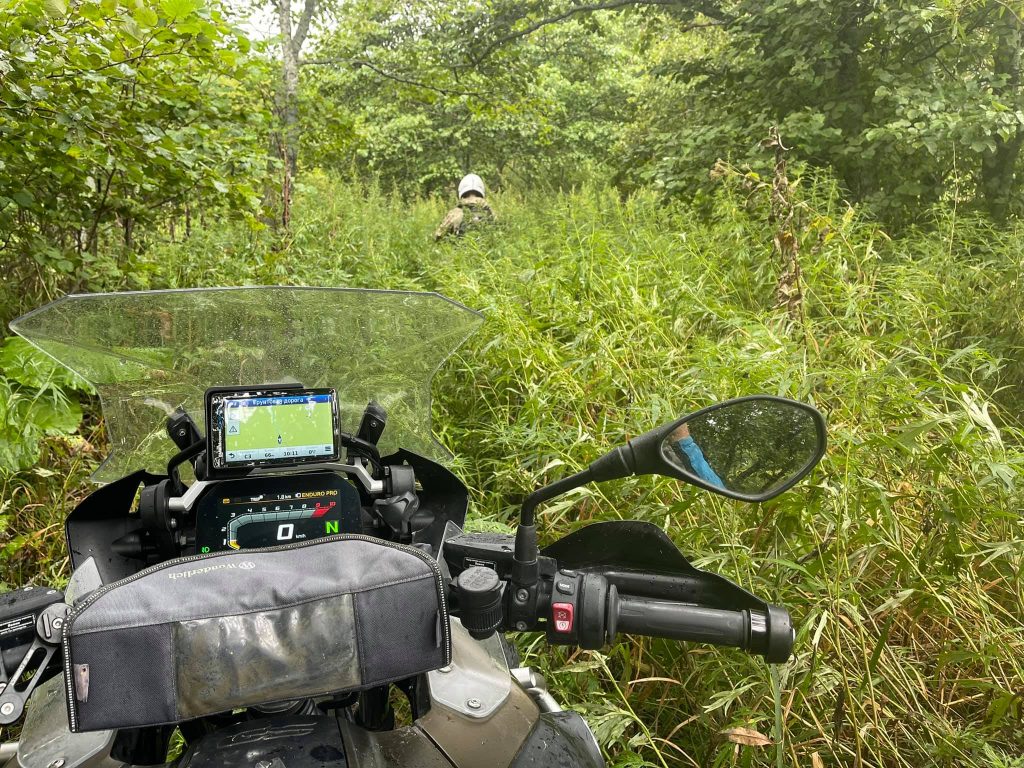
But there's a certain zest in it!
If double-decker buses with Chinese tourists went here, the shops with souvenirs made in China were around, everything was fenced off, and you had to stand in a queue for half an hour to take a photo, then, personally, I would hardly get such a burst of emotions!
On our way my guide Eugene (a local motorbiker) and I stopped at the working lighthouse on the Crab cape (43.836521, 146.919093). Its guard Sergey Ilyich just gave us the keys and the lighthouse, built by the Japanese, was completely at our disposal for a while. But I'll tell this story in detail a bit later.
It isn't possible to ride by motorbike to the very edge of the cape. So we left our transport 300 metres away and started climbing the rope to the rock.
The wind is constantly blowing here. You can also hear the cries of seagulls and the sound of waves hitting the rocks.
And here it is — the Edge of the World!
I was astonished!
The sight is magnificent: rocks, endless ocean, waves, seagulls. And you're completely alone here.
You are free to shout, jump, do a somersault, sit silently on a rock as long as you want, looking at the horizon, thinking about philosophical questions, or lie on the ground with your arms outstretched and your eyes closed. That's how happiness feels!
Spanberg's Lighthouse
A motorbike journey to the Edge of the World. Shikotan Island.
Shikotan Island isn't very big. It's 27 km long, 5 to 13 km wide and looks like a solid mountain range. The coastline is cut by large and small bays with sandy beaches bordered by hills and steep cliffs. The landscape is amazing!
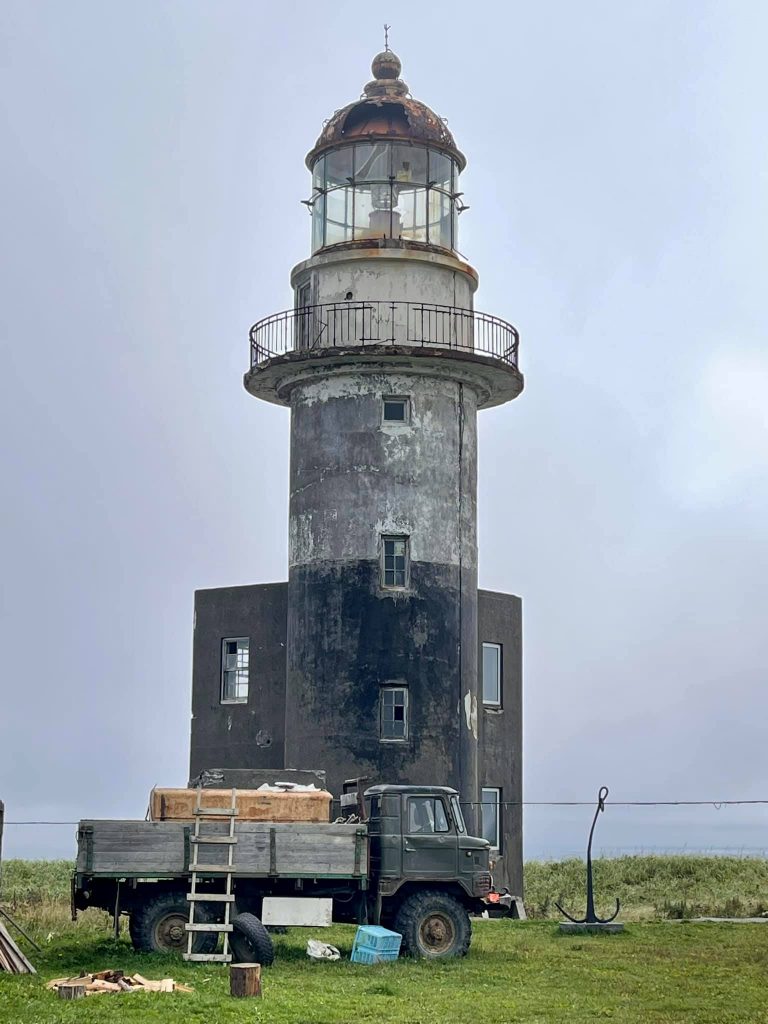
On one of these capes called the Crab one there is the lighthouse of Shpanberg, (43.836521, 146.919093). Just like the Aniva lighthouse in Sakhalin, it was built by the Japanese in the 40s of the last century. They are structurally alike and the principle of the mechanism operation is identical. This lighthouse is still in work, but its condition is not much better than Aniva's.
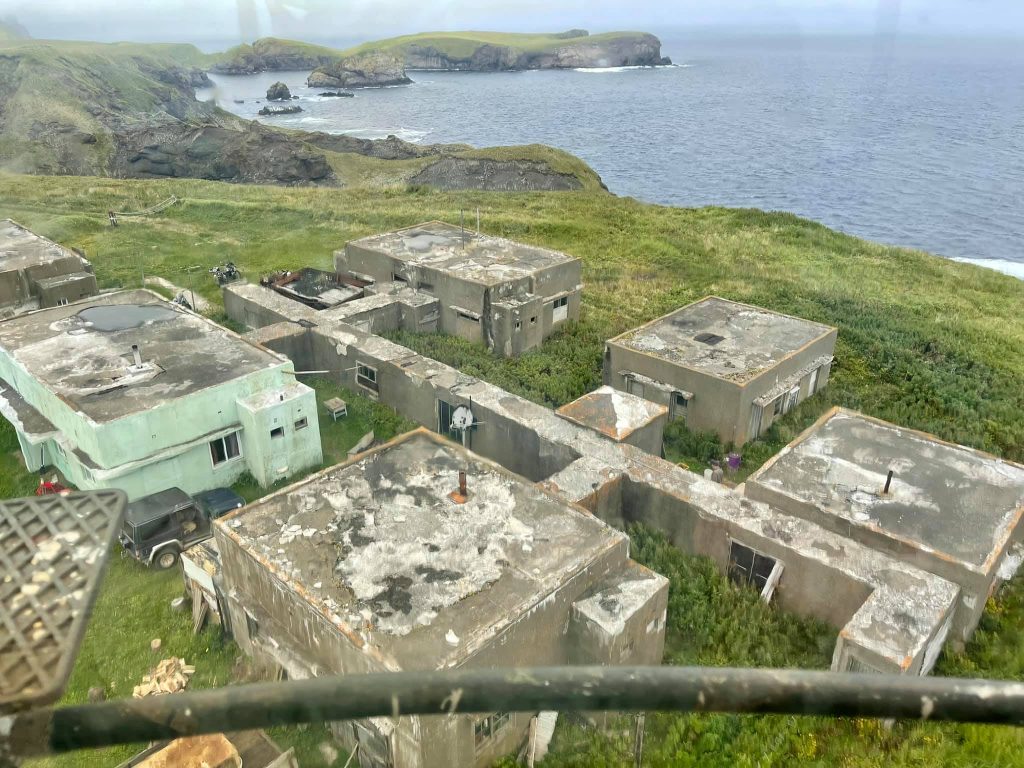
And these are technical and residential buildings. You can move between them through the corridors.
A strong wind is constantly blowing at the cape and together with sea salt destroys wood, concrete and iron. Therefore, such structures require constant maintenance and repair, but the authorities might have not contributed enough money to it.
We stopped at the Crab cape on our way to the Edge of the World and were met by the guard Sergey Ilyich, a cheerful 60-year-old man. He had just checked the crab traps and then the crabs were being cooked in a large pot over a fire.
— Help yourself guys, don't be shy!
— Thank you so much!
A fresh crab directly from the sea, certainly, can not be compared with a frozen product from the store!
Sergei Ilyich did not give us a tour of the lighthouse, as he was busy preparing the delicacies, but simply gave us the keys to the lock of the lighthouse entrance door.
The Spanberg's Lighthouse is not just a tower with a lamp. It is a complex of buildings connected by closed passages. It was completely standalone and there was even a real well in one of the buildings. The lighthouse was provided with electricity by two diesel generators and with heating by the stove.
Most of the buildings are now empty or in disrepair.
Time, wind and ocean erase our history from the face of the earth mercilessly.
And it happens very quickly if no one needs it.
The Iron Brontosaurus of a bygone epoch.
After the defeat of Japan in 1945, the Kurile Islands and the southern part of Sakhalin were negotiated to belong to the Soviet Union, which immediately began to strengthen the new eastern borders of our homeland. Many military units and fortifications were built in the islands.
In case of the attack by an enemy (and Japan after the end of World War II was under the United States protection), the islands Kunashir and Shikotan were at the forefront.
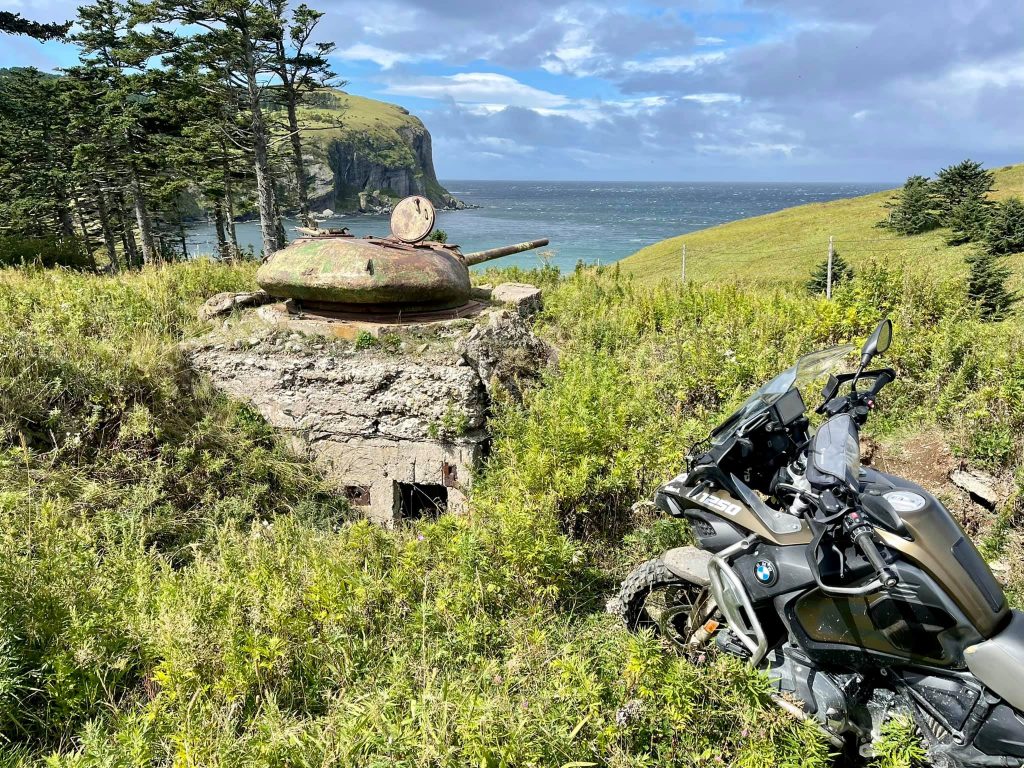
A lot has changed in the latest 75 years. The USSR no longer exists, the Cold War has ended and started again… But so far a peace agreement has not been signed between Japan and Russia and our neighbors consider the territory of the southern Kuriles to be temporarily occupied.
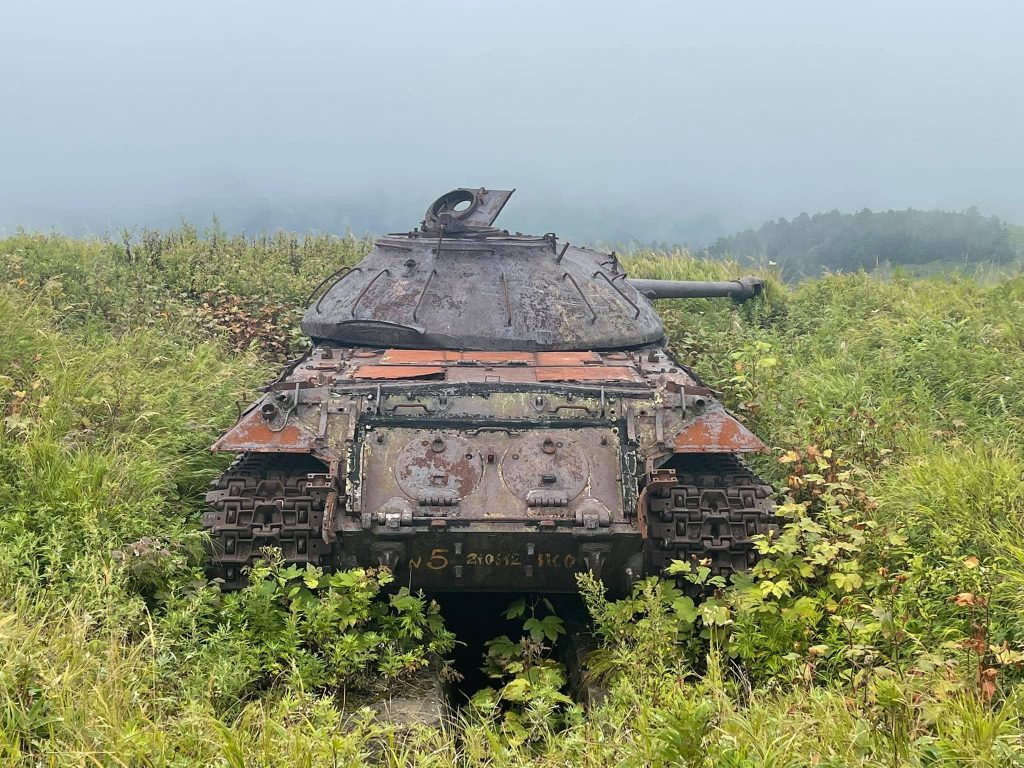
Numerous military facilities in Shikotan remind of the difficult situation of the past and nowadays.
One of them is located on the top of the hill next to the Crab bay. A dozen IS-2 and IS-3 tanks with loads of 122 mm guns pointing towards the ocean and the entrance to the strategic bay were connected by trenches, dugouts and represented a strong line of defense in those dark times. (43.818206, 146.728157)
The trenches have long been collapsed and overgrown with grass, the hulls and turrets of the tanks were covered with rust and stopped rotating. Now these legendary military vehicles look like an abandoned open-air museum.
Shikotan is fantastic!
Shikotan Island is a little miracle in the middle of the ocean.
My motorbike trip to the Kurile Islands is coming to an end.
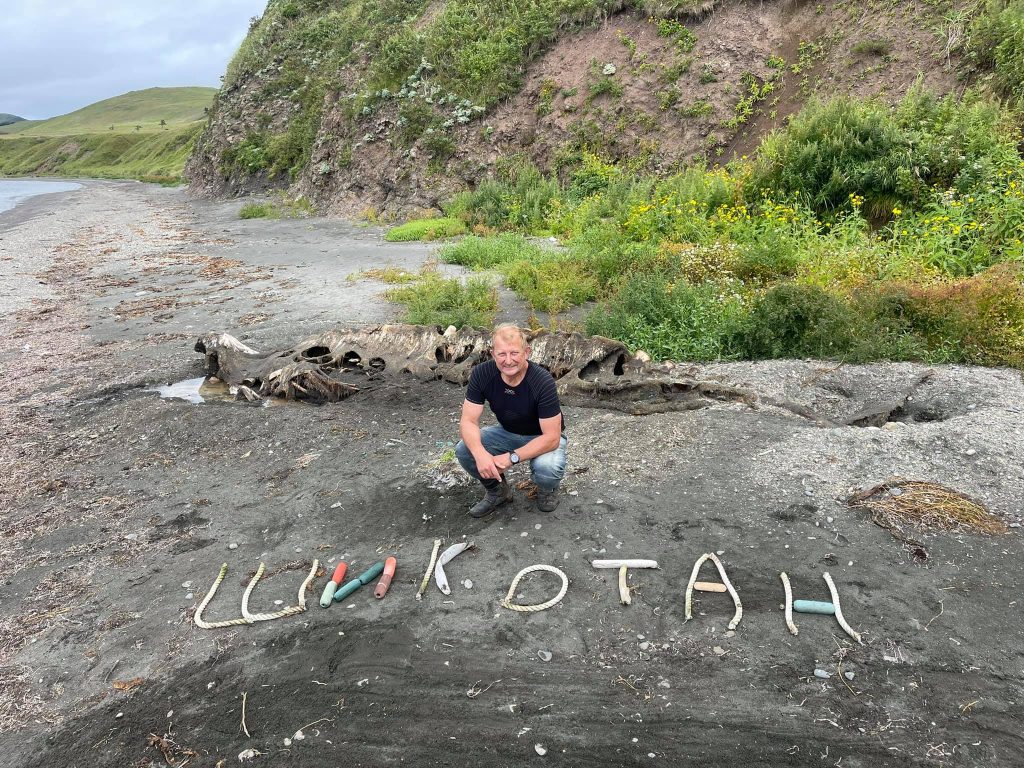
Imagine you're walking along the shore and run upon the skeleton of a whale. And it's a common thing in Shikotan.
I've got so many bright impressions that it will take some time to realise everything that happened to me. It's like a kaleidoscope of events, fantastic landscapes, meetings with wonderful people and incredible adventures.
And the last five days in Shikotan were like the five best episodes in my endless adventure series about traveling around the planet Earth.
It's so wonderful just to sit at the Edge of the World, dangling your legs over the ocean!
Or while walking along the beach, to come across a huge whale that was washed ashore by a storm, and then sit on a pebble three metres away from it, throwing pebbles at this monster.
And to meet a very rare moonfish in a small bay, thrown out by the waves at low tide!
Having dived all the oceans and dozens of seas over two decades, I only once saw this amazing, surprising, one of the largest bony fish in the world, during scuba diving in the Galapagos Islands and remembered it for a lifetime. And here it is! Look at it as much as you want!
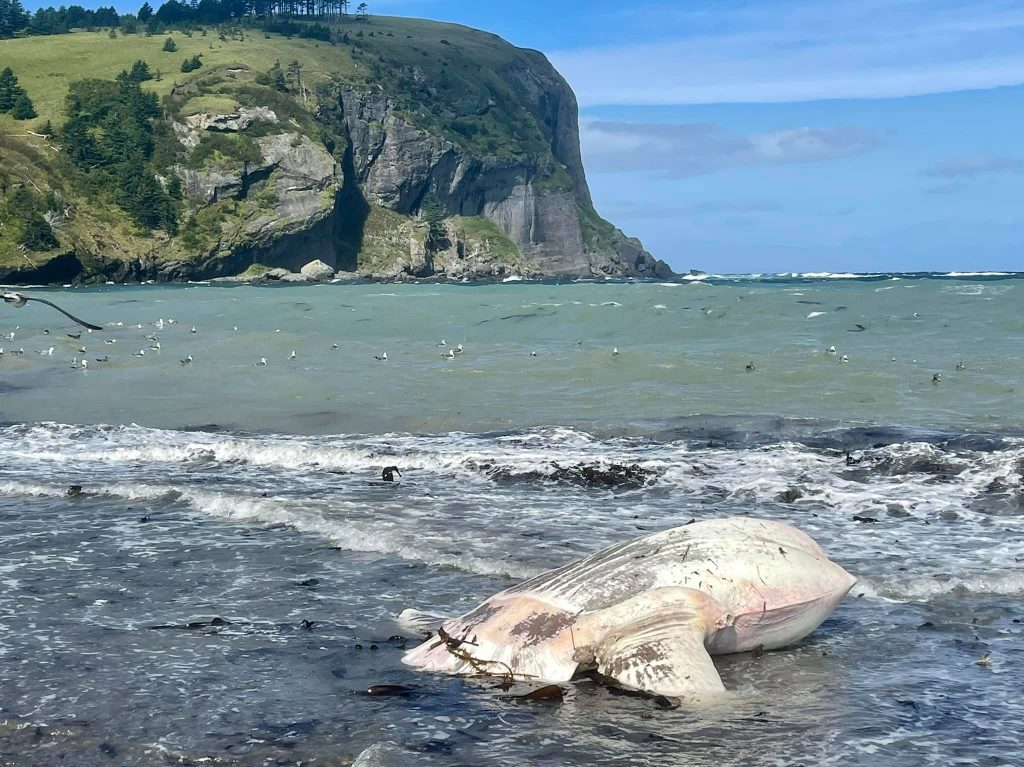
And this video was filmed when I was riding a motorbike the day before yesterday and saw that the whole shore was covered with fish and people were scooping it out of the water with basins, nets or just with their hands. Where else could you see something like this?
And in the last hours, another motorbiker, Dima Kreklin, who works part-time as a senior mechanic on a fishing boat, found me and invited me to take a tour of the boat.
For the first time I have walked around a modern steamer from its bilge, engine room to the captain's bridge. And that was thrilling! While I was going by the ferry from Shikotan to Sakhalin, they managed to go to sea and come back with a 500 ton catch!!!
I have already written about tanks, lighthouses and awesome views of the island. And I saw and experienced all this in less than five days!
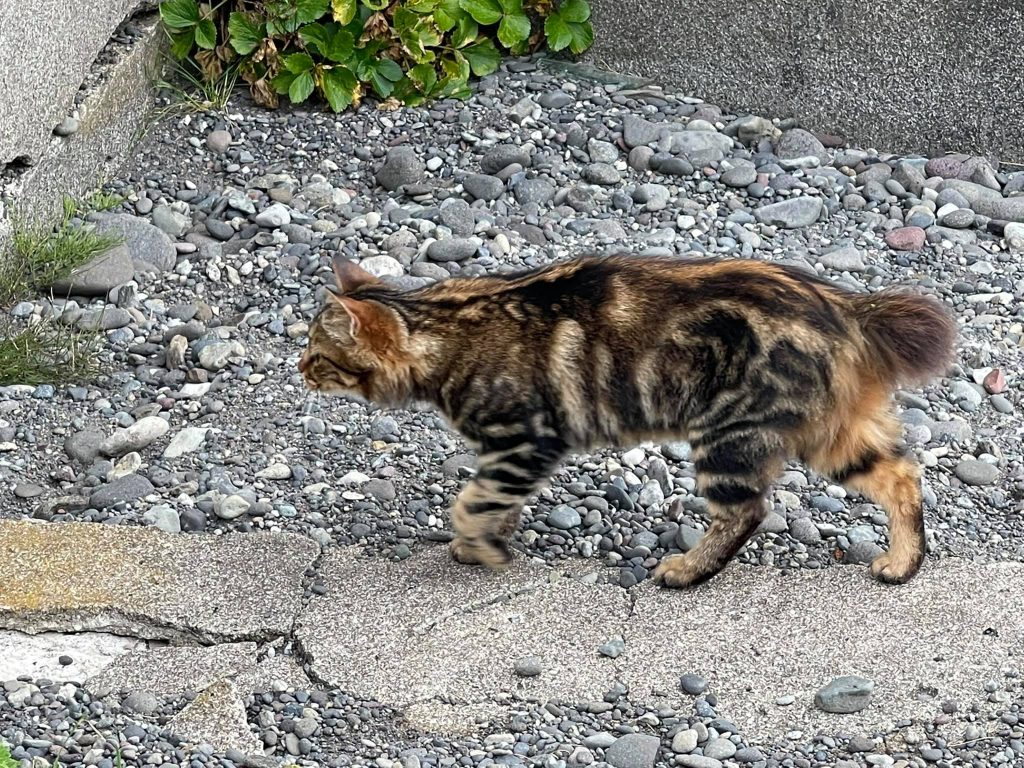
By the way, there live unusual cats of Kurile breed. They have really short tails, just 3-5 sm long.
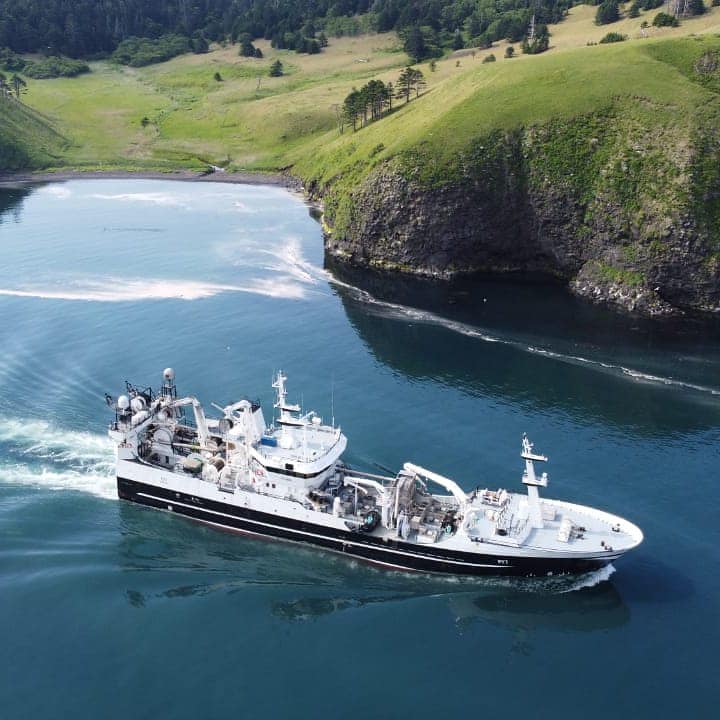
I could have gone to sea with the fishermen by this beautiful seiner. But, unfortunately, I was in a hurry. I should come back and fill the gap one day!
Roads of Shikotan Island
When I freed my motorbike from the crate at the dock of Malokurilsky port, the porters looked with surprise at the unusual means of transport (for the island) and asked me where I was going to ride it.
"We have only 9 km of roads from one village to another and that's a grader one. The whole island is less than 30 km, covered by hills and swamps, and you can drive there by ATV only. Or by a light moped.
Then I was often asked why I had come with a heavy BMW. There are a lot of SUVs, ATVs, light enduros in the island, but some locals have seen such a bulky model for the first time.
Indeed, there is only one road in Shikotan connecting two villages, an unpaved one, and the rest cannot be called roads at all. Those are ground surfaces which are possible to be driven along in dry weather, but after heavy rains it is already quite difficult.
If you want to see the island, be ready to overcome blurred ruts, deep puddles, streams and rivers, slippery clay, steep rocky ascents, descents and even swampy areas. But it's worth it!
It's better to go around Shikotan and Kunashir by ATV or by light enduro motorcycle as the locals do. But if you have enough experience of driving off-road, then you will be able to get to 80-90% of the most interesting places of the island by a heavy tourist motorbike too. I would recommend you to plan not less than 4 full days to visit the island, since the nature here is just fantastic and should be enjoyed without any hurry.
And I managed to get an amazing experience, having ridden around the island (27x9 km) for about 260 kilometers! :))
Of course, it is easier to visit the Kurile Islands as part of a tourist group and have your tickets bought by a travel agency. This way you won't worry about anything at all. The agency will take care of you, provide accommodation and meals, etc.
Well, but if you still want to come here on your own (and even by your heavy motorbike) then it will be a superb adventure! By the way, a pleasant gift is waiting for you at the Edge of the World!
Vanino → Khabarovsk
My journey to the Edge of the World is coming to an end. As usual it feels a little bit sad when you need to leave.
A month of incredible adventures has run fast and left a huge amount of positive emotions of meeting interesting people; exploring unique nature, animals, the ocean, volcanoes; immersing in the history of the country.
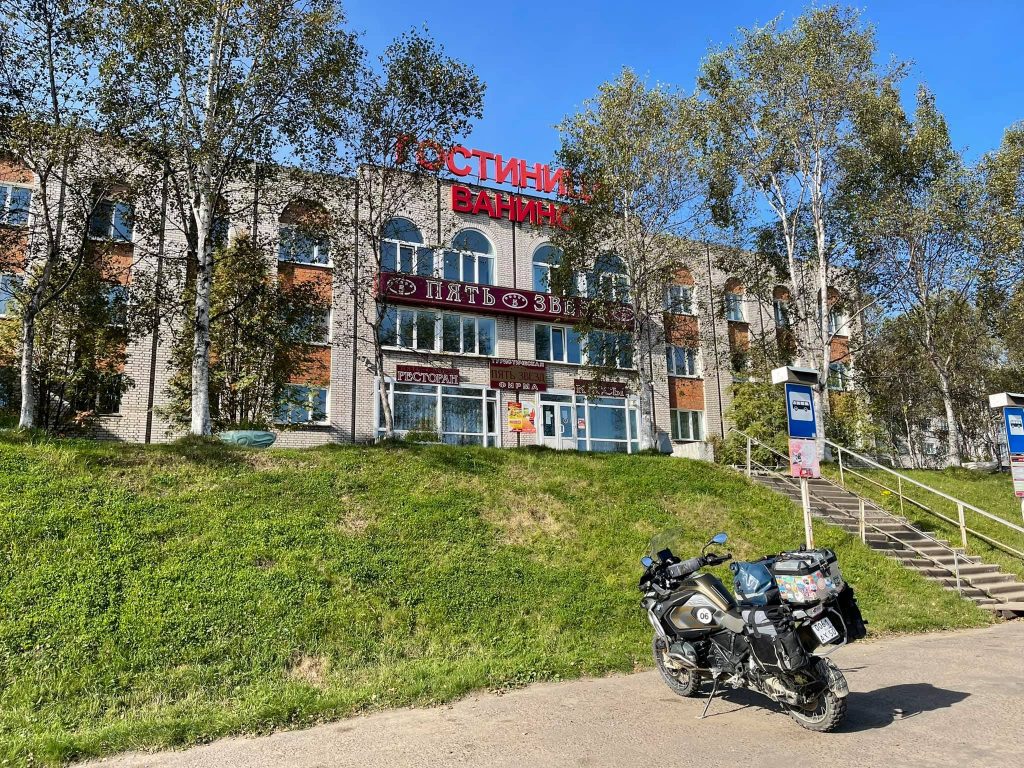
And again I was lucky as there was a free room in a five-star hotel in Vanino!
What did I memorise the most?
First of all, I loved the people. It may sound weird, but I haven't met a single bad person this month. Everyone I asked for help did help me in solving various problems: technical, bureaucratic, daily simple. And I have faced the problems really often!
From the first day in Sakhalin, when a nice girl, a FSB border guard, made me a pass for a day, which, according to the instructions, is to be made within 15 working days, and to the latest adventures with motorbikers in Kunashir and Shikotan, who showed me those amazing places. They were not only my guides, but also supplied me with petrol for free (it costs quite a lot in the islands) and treated me the local delicacies!
The porters helped to pack and unpack the motorbike, lending their tools and nails. The hostess of the inn in Shikotan accommodated me in her own room and moved herself to another place for a while. The dispatchers at ports called me personally, warning about ferry delays and so on. Without the help of these people my journey would hardly have turned out so bright. And maybe nothing at all would have come out of this venture.
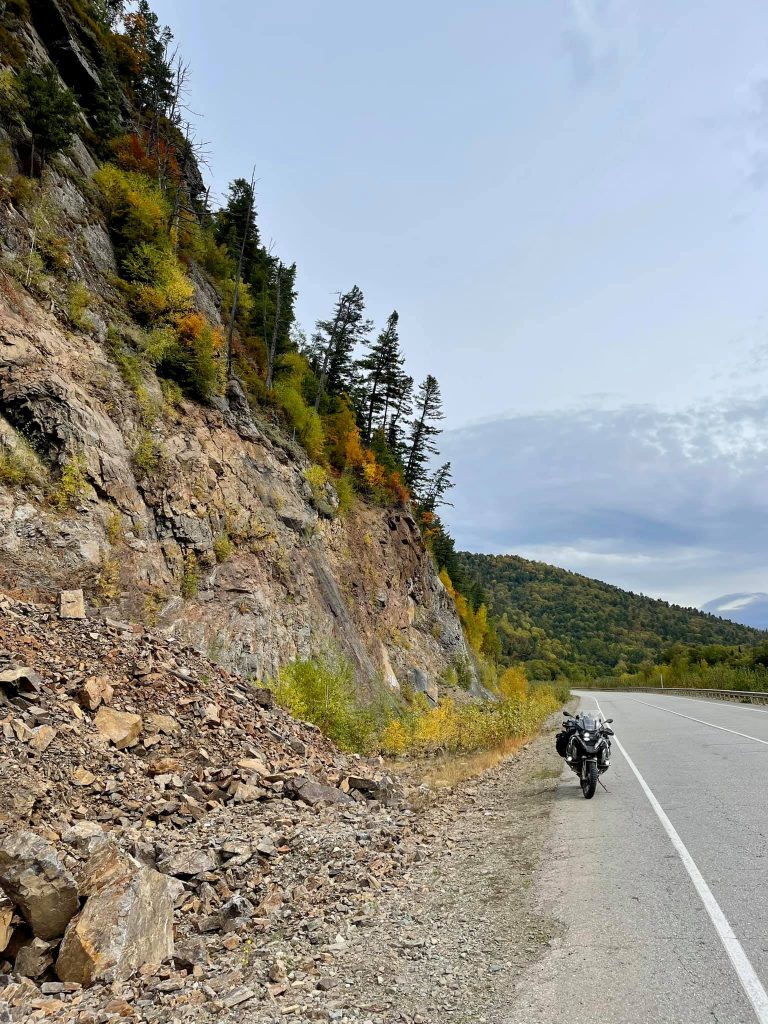
The second reason why I liked the trip is nature.
Sakhalin and especially the Kuriles are unrealistically fascinating, unusual and outstanding! Well, where else could you kick a huge whale lying on the shore or see a moonfish two steps away from you?
Maybe it's possible somewhere in the Galapagos Islands or in South Africa. Maybe…
The bamboo woods, smoking volcanoes and boiling lakes, bizarre rocks and old lighthouses are like taken from another planet!
My motorbike did not fail, but there was a moment (during the trip across Sakhalin), when it suddenly stopped showing any signs of life. Again, that was the ignition unit malfunction. It had once happened to me a year before during my North journey. The worst thing in this situation is that it's impossible to solve this problem quickly, even having given it to the official dealer, and the motorbike turns into a pile of iron and plastic as a result. And, of course, this accident happened again far away from the civilized roads.
About an hour of various manipulations did not lead to anything, but suddenly, my 101st attempt to press the ignition button was lucky and the display screen was turned on! :)
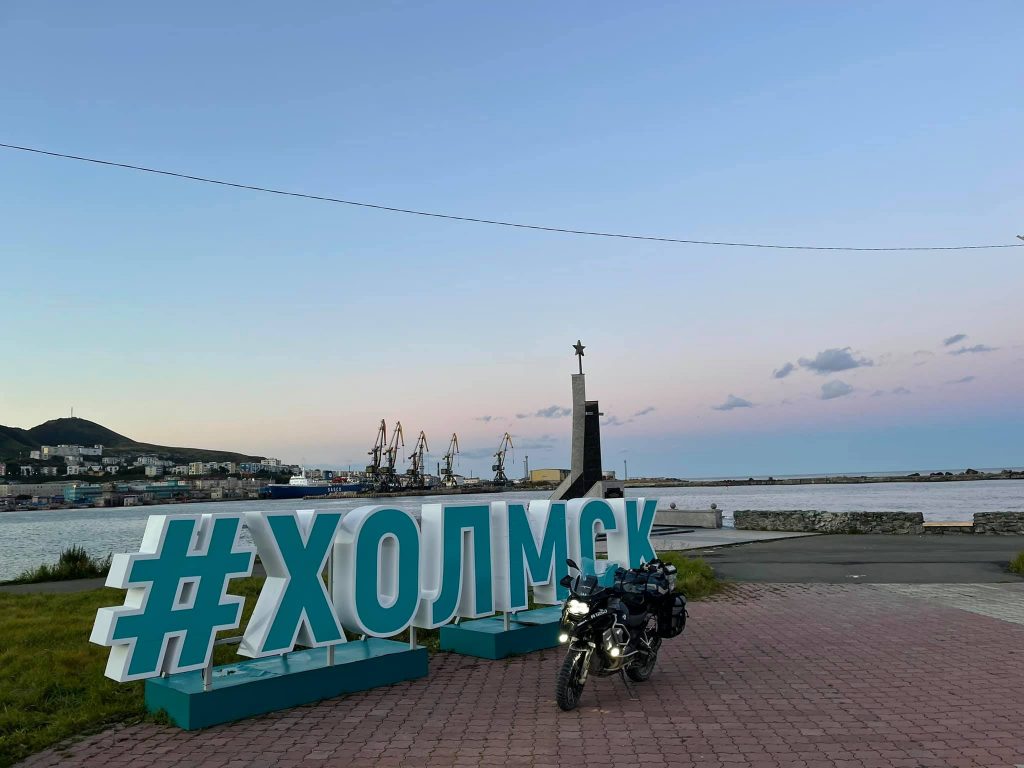
Then I experienced a sleepless night when I had to to arrive at 5 a.m. to check in for the ferry to Kholmsk, which is a hundred kilometres away from the capital of Sakhalin.
On my way to Kholmsk the temperature dropped to +4°C at the pass. That's how summer ends in Sakhalin.
Then I had been waiting at the port for a long time to cross the Sea of Okhotsk by a terrible, rusty, old Sakhalin-9 ferry. After that I stayed overnight in Vanino and went 550 km along the beautiful road from Vanino to Khabarovsk the following sunny day.
Today I handed over my motorbikey to the transport company and tomorrow afternoon I'm flying home by Aeroflot.
 Cap-travel.ru
Cap-travel.ru